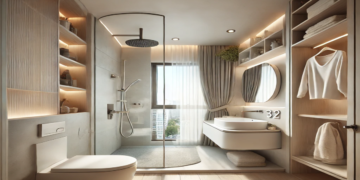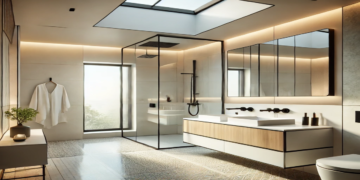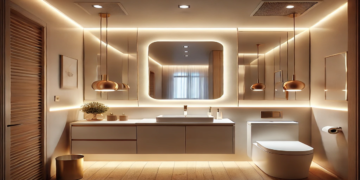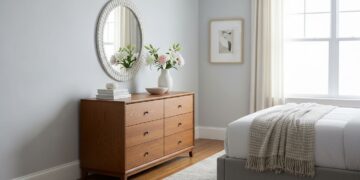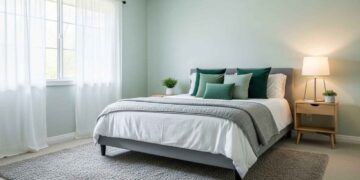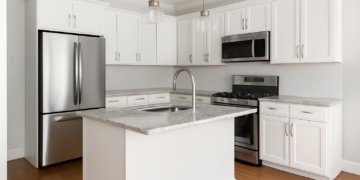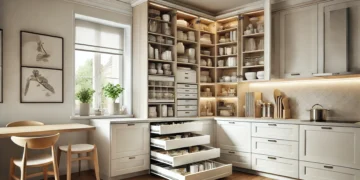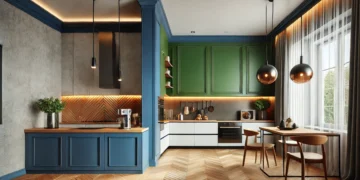Rug positioning is one of the key interior design aspects in living rooms. A proper rug can bring a room together, while incorrect placement can make the room appear fragmented. This guide is going to cover a variety of rug placement topics in the living room, such as the size, positioning, and different furniture settings.
Knowing Why Rug Placement is Important in Living Rooms
Correct carpet placement in the living room is a striking transformation of the entire appearance and utility of the room. One rug perfectly put may not only organize seating areas but also amplify their warmth and be a common denominator of all interior styles. The shape of the room and the position of furniture are the main factors to be considered while deciding where to place a rug.
Choosing the Right Rug Size for Your Living Room
The choice of an appropriate carpet size for your living area is quite an essential factor in having a neat look. Here are some rules you should follow:
Small Living Rooms
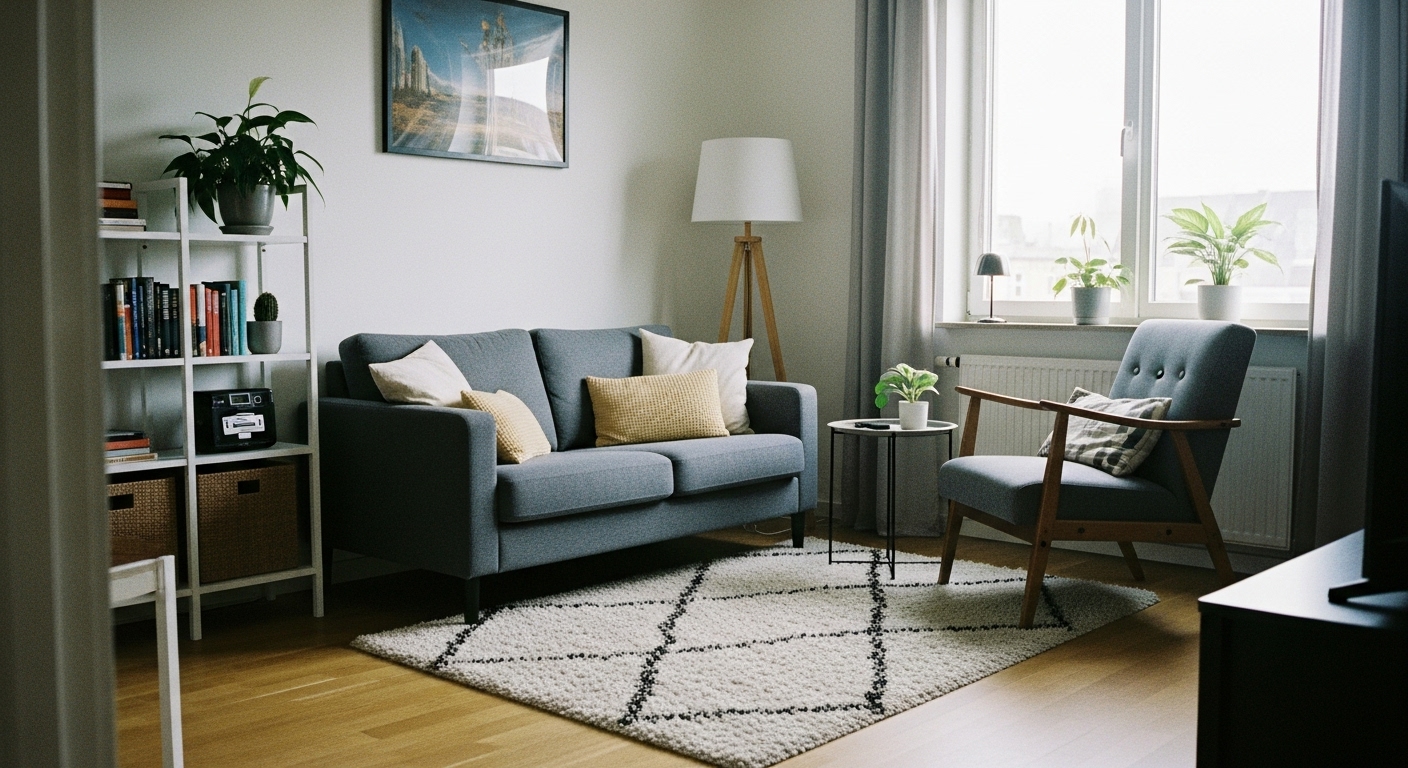 When dealing with smaller living rooms, 5×8 or 6×9 rugs are frequently popular choices. These sizes might be the best approach to making the room not feel overwhelmed, and still being able to define sitting zones. You may also like our guide on decorating small spaces here.
When dealing with smaller living rooms, 5×8 or 6×9 rugs are frequently popular choices. These sizes might be the best approach to making the room not feel overwhelmed, and still being able to define sitting zones. You may also like our guide on decorating small spaces here.
Medium Living Rooms
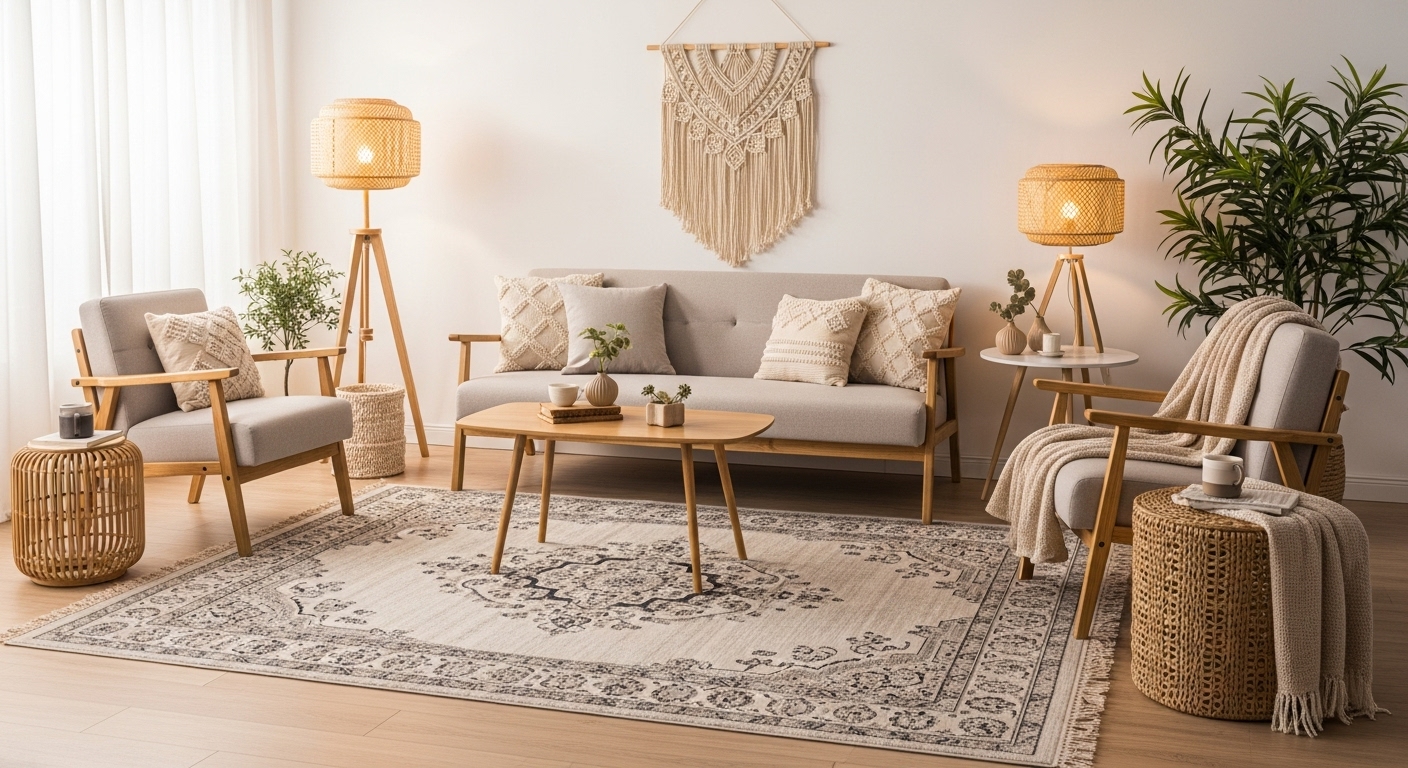 An 8×10 rug usually fits nicely in a medium-sized living room. This size will provide enough space for most furniture to be placed on top of it.
An 8×10 rug usually fits nicely in a medium-sized living room. This size will provide enough space for most furniture to be placed on top of it.
Large Living Rooms
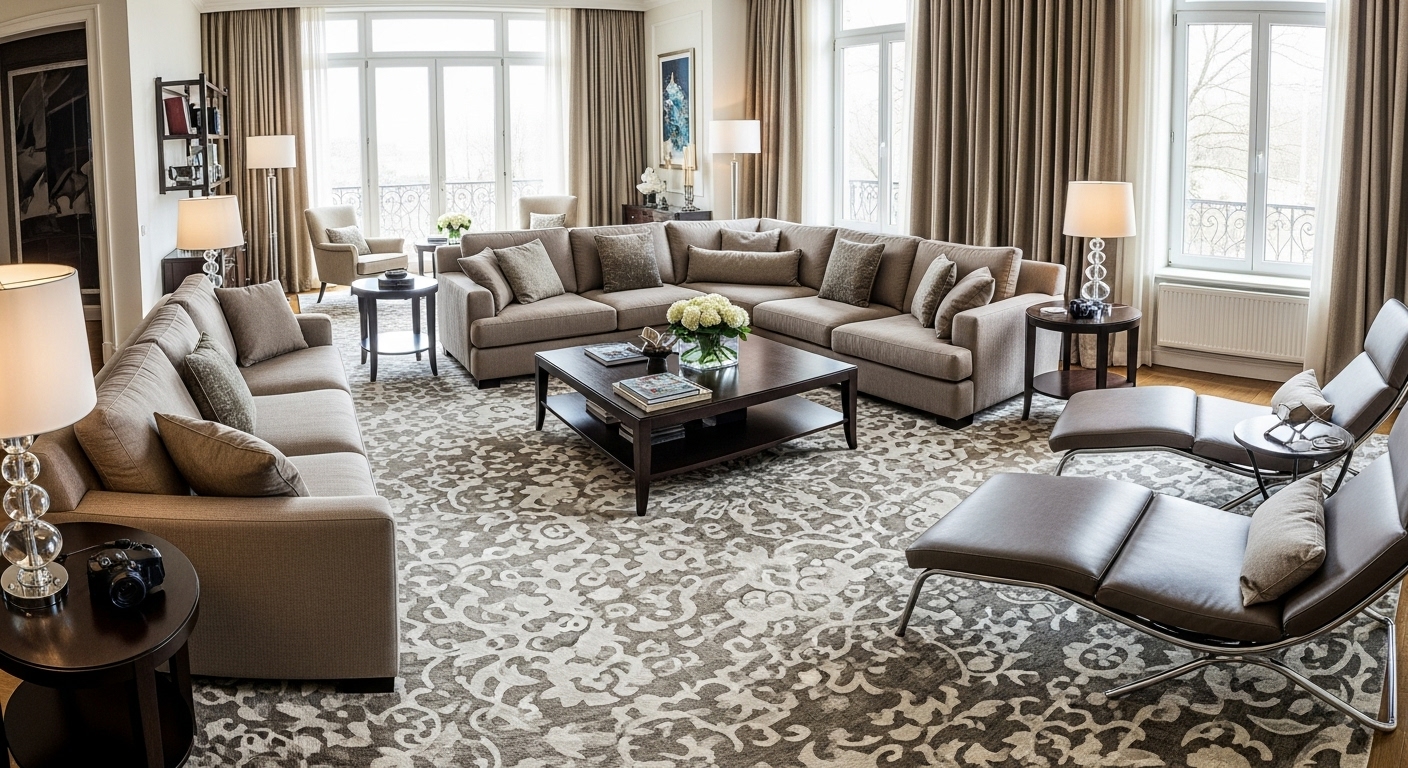 In larger living rooms, a 9×12 or even bigger carpet may be the best option. These bigger carpets have the space needed to include all the furniture pieces and make a single beautiful arrangement.
In larger living rooms, a 9×12 or even bigger carpet may be the best option. These bigger carpets have the space needed to include all the furniture pieces and make a single beautiful arrangement.
Living Room Rug Placement: Basic Rules
When it comes to living room rug placement, there are a few basic rules that must be followed.
1. Center the Area
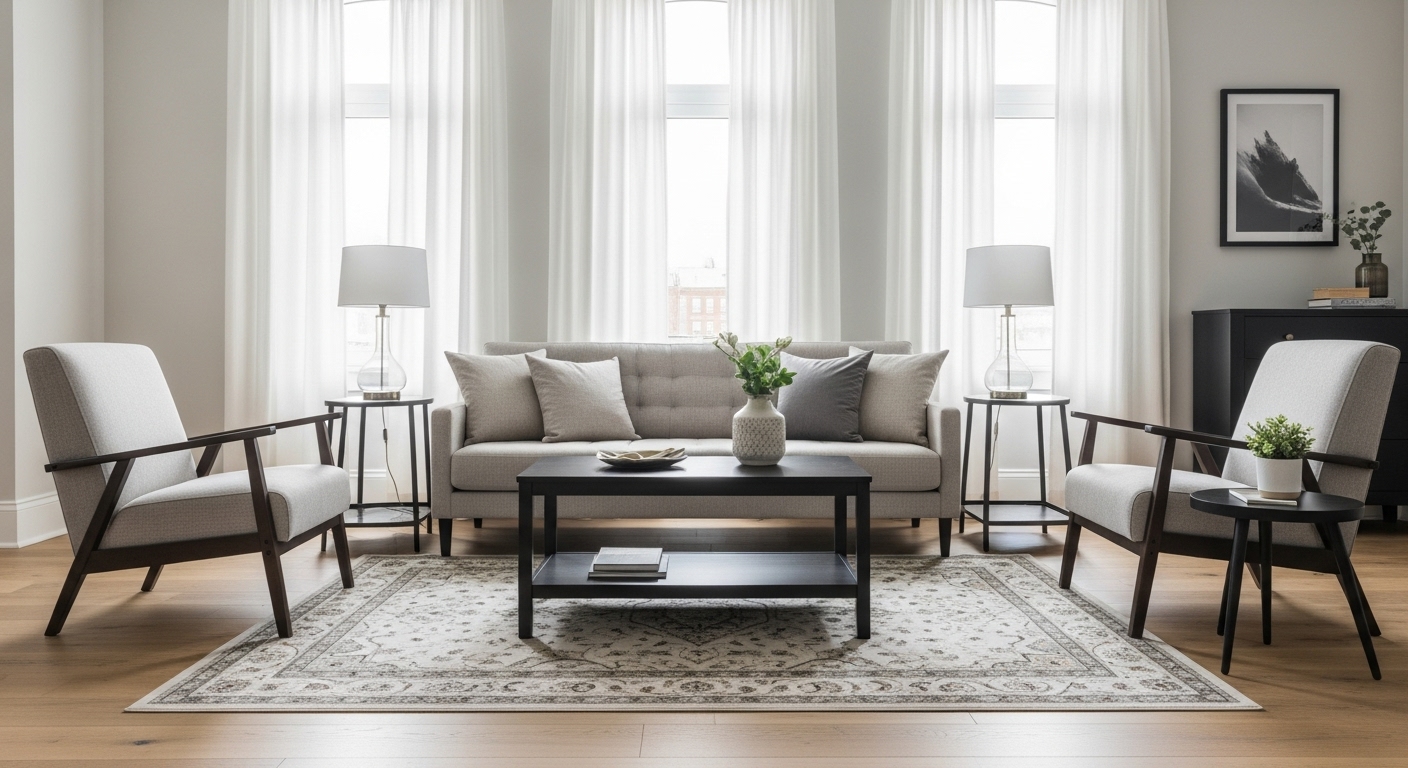 The rug should occupy the center of the room or the area of seating. Through this, you can rest assured that the room is balanced and looks visually appealing.
The rug should occupy the center of the room or the area of seating. Through this, you can rest assured that the room is balanced and looks visually appealing.
2. Provide Space Around the Edges
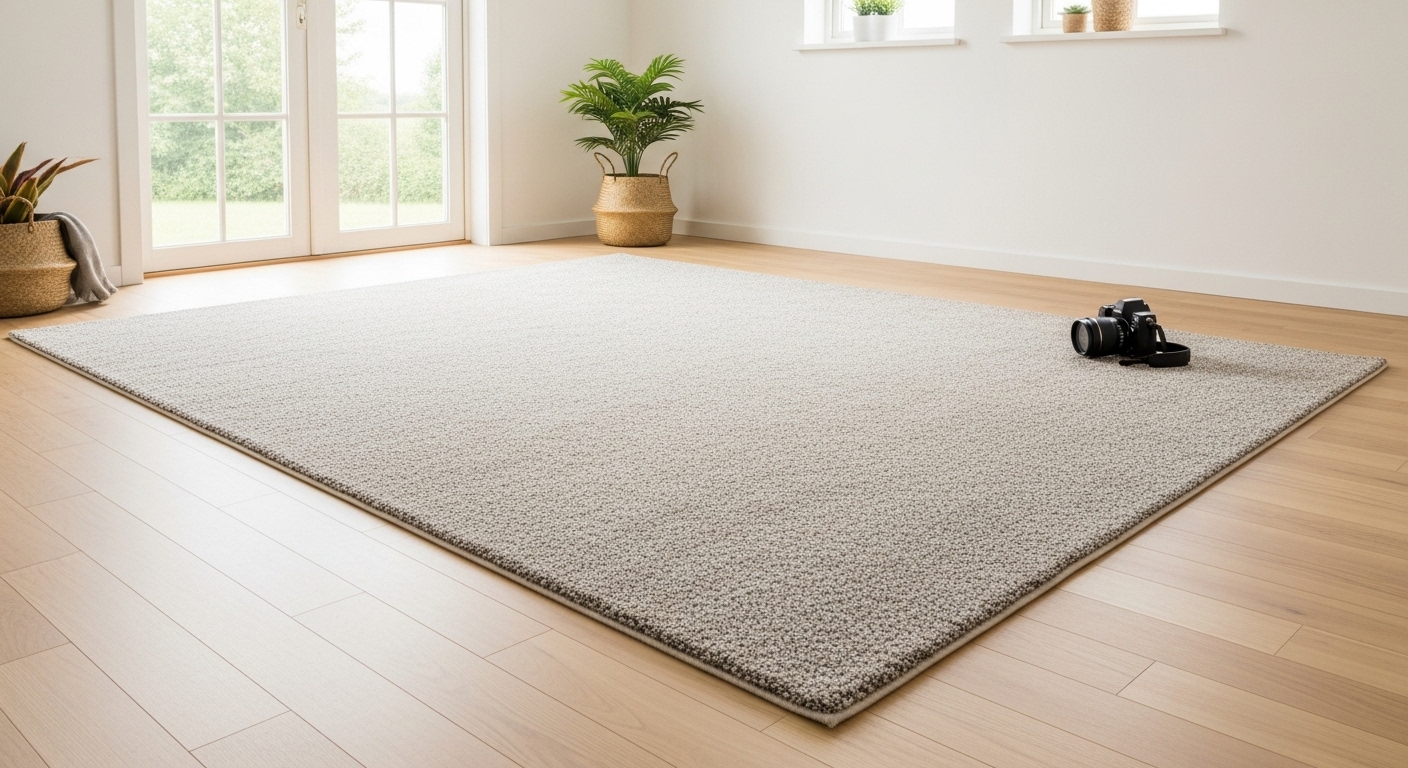 The ideal scenario would have at least 12-18 inches of the floor being left empty between the walls and your rug. This enhances the room and makes it look cheerier.
The ideal scenario would have at least 12-18 inches of the floor being left empty between the walls and your rug. This enhances the room and makes it look cheerier.
3. Look at the Traffic Flow
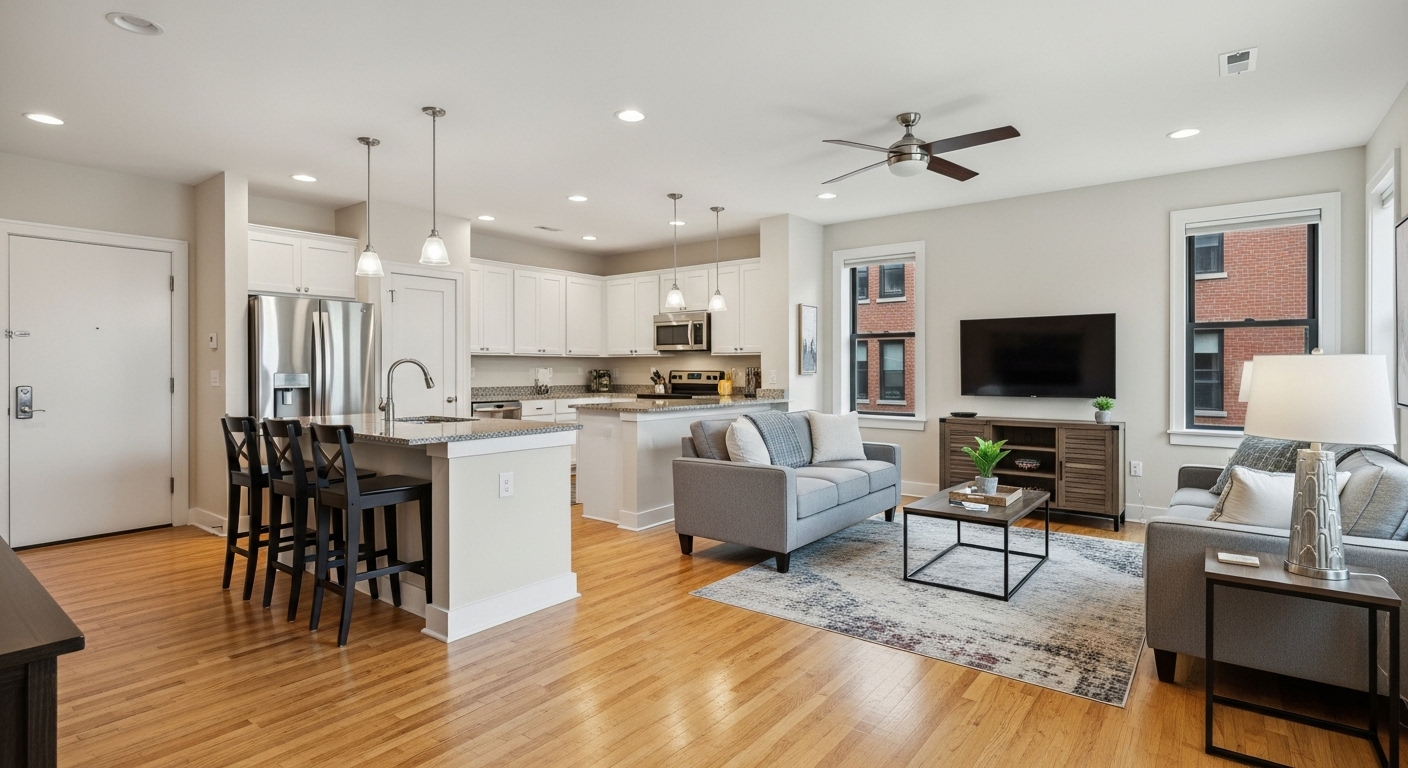 Always ensure that the rug placement allows for the smooth movement of people through the living room. Refrain from setting them in areas where people often walk because they can become a tripping hazard.
Always ensure that the rug placement allows for the smooth movement of people through the living room. Refrain from setting them in areas where people often walk because they can become a tripping hazard.
Proper Rug Placement with Living Room Sectionals
The placement of rugs in a room that includes a sectional can be somewhat challenging. Here are a few ideas for the proper placement of a rug with a living room sectional:
1. All Legs On
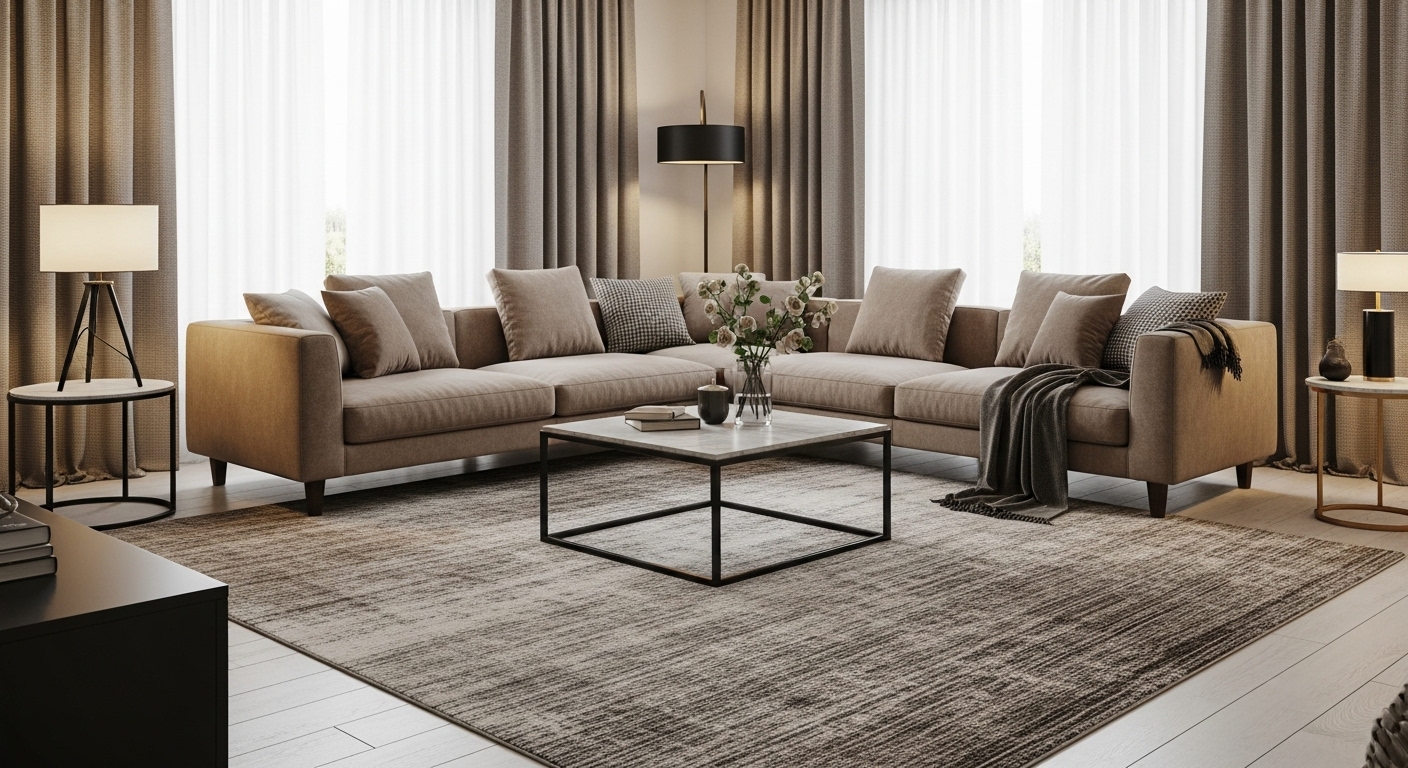 The best solution is that all the legs of the sectional should be on your rug, to look like one big piece instead of a small one.
The best solution is that all the legs of the sectional should be on your rug, to look like one big piece instead of a small one.
2. Front Legs Only
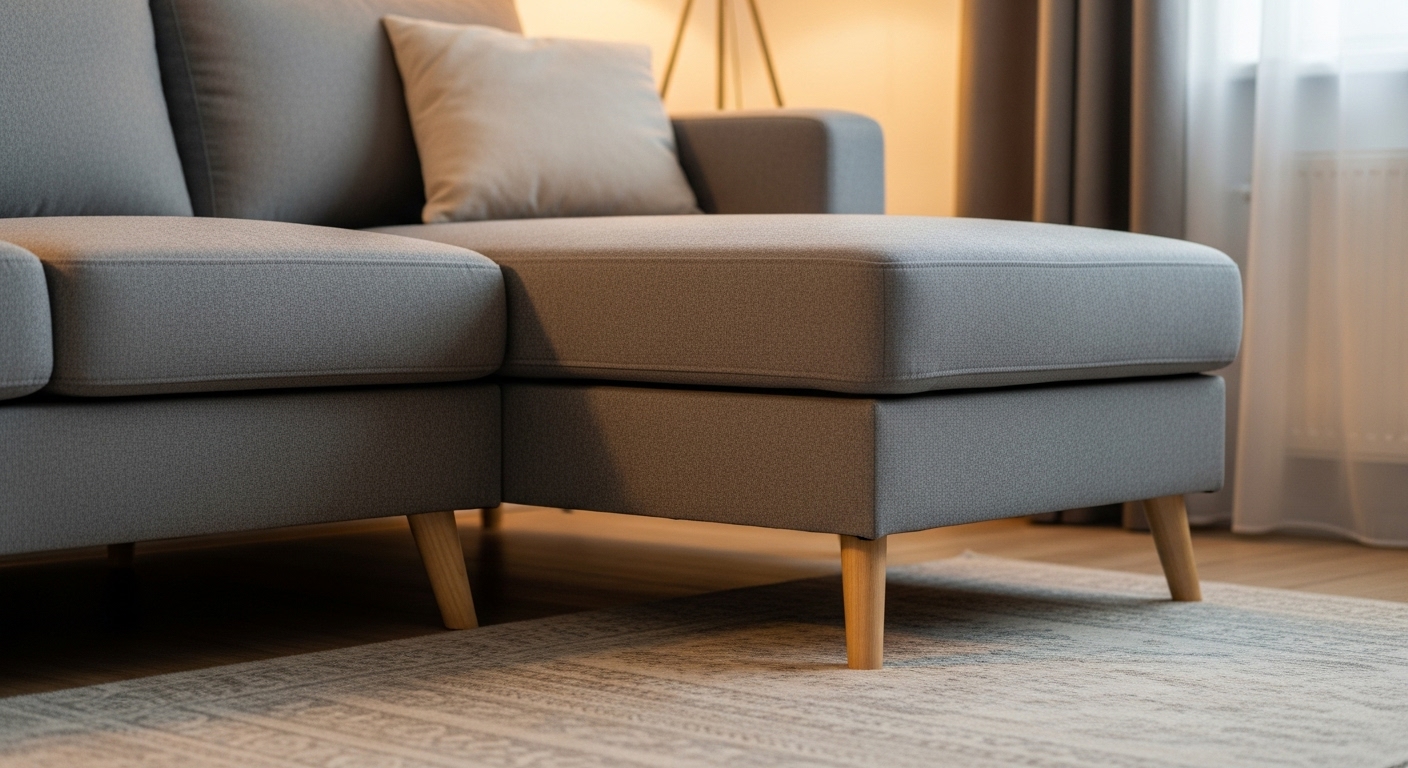 In case your space is not spacious enough to have all the legs on the rug of your sectional, put only the front legs of the sectional on the rug. This design still makes it clear that this is a separation area, but with less space than a larger blanket would have provided.
In case your space is not spacious enough to have all the legs on the rug of your sectional, put only the front legs of the sectional on the rug. This design still makes it clear that this is a separation area, but with less space than a larger blanket would have provided.
3. Floating Rug
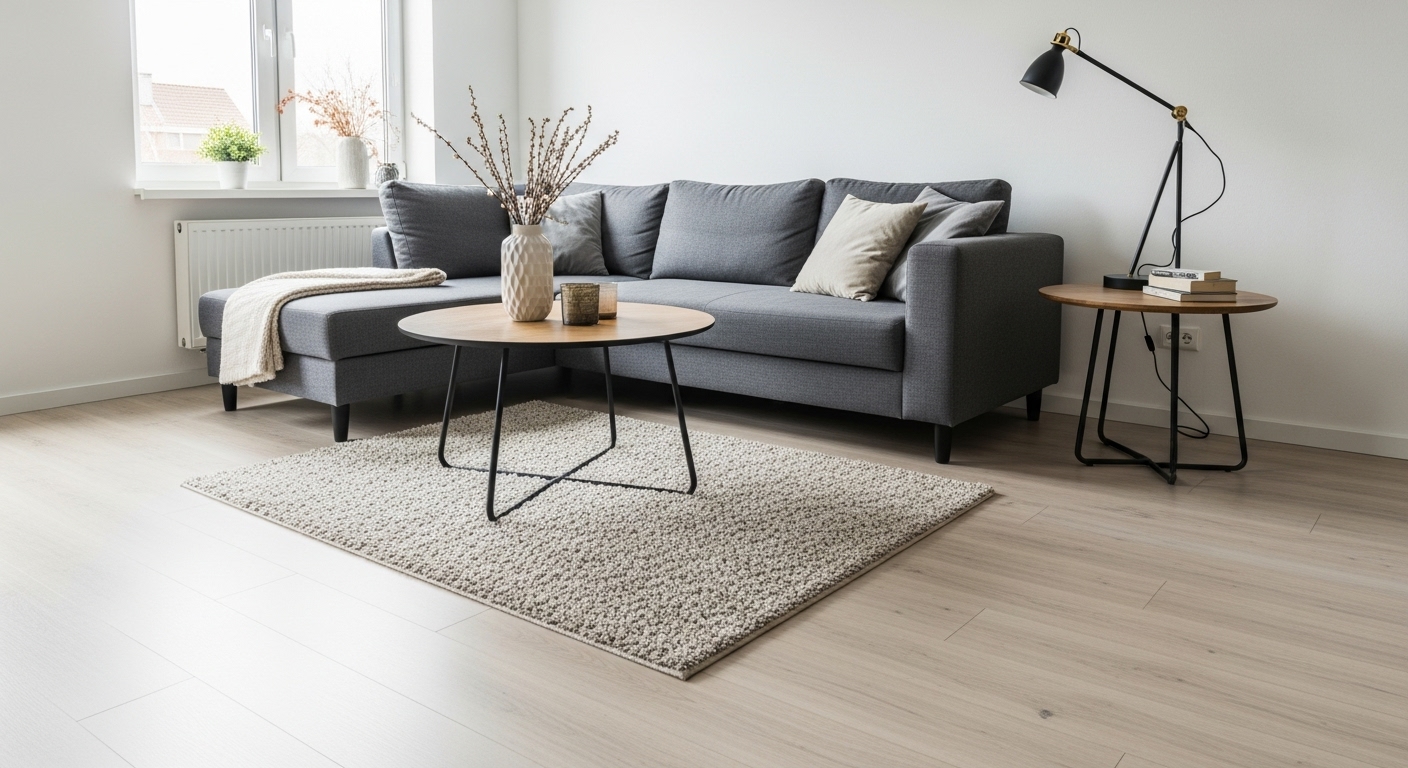 For a touch of contemporary design, you could place a smaller rug without any chairs on the side in front of the sectional. This is a great option for coffee tables or areas with an open floor plan.
For a touch of contemporary design, you could place a smaller rug without any chairs on the side in front of the sectional. This is a great option for coffee tables or areas with an open floor plan.
How to Place a Rug Under a Sectional
Rug and sectional placements can noticeably change a room’s appearance. Here are the steps to place a rug under a sectional.
- Measure the space of the seating, including the sectional, and any other additional chairs.
- Choose a rug that is larger than the sectional and that extends on all sides of the sectional.
- Centralize the rug in the area where the sectional and chairs are located.
- Make a side rug starting with the sectional on the rug, where at least the front legs will be on the rug.
- Assemble the rest of the furniture near the sectional, but if possible, leave it on the rug.
Rug Placement Tips for Different Living Room Layouts
Living room layouts may vary a lot. These are some rug placement tips for typical configurations:
Open-Concept Living Rooms
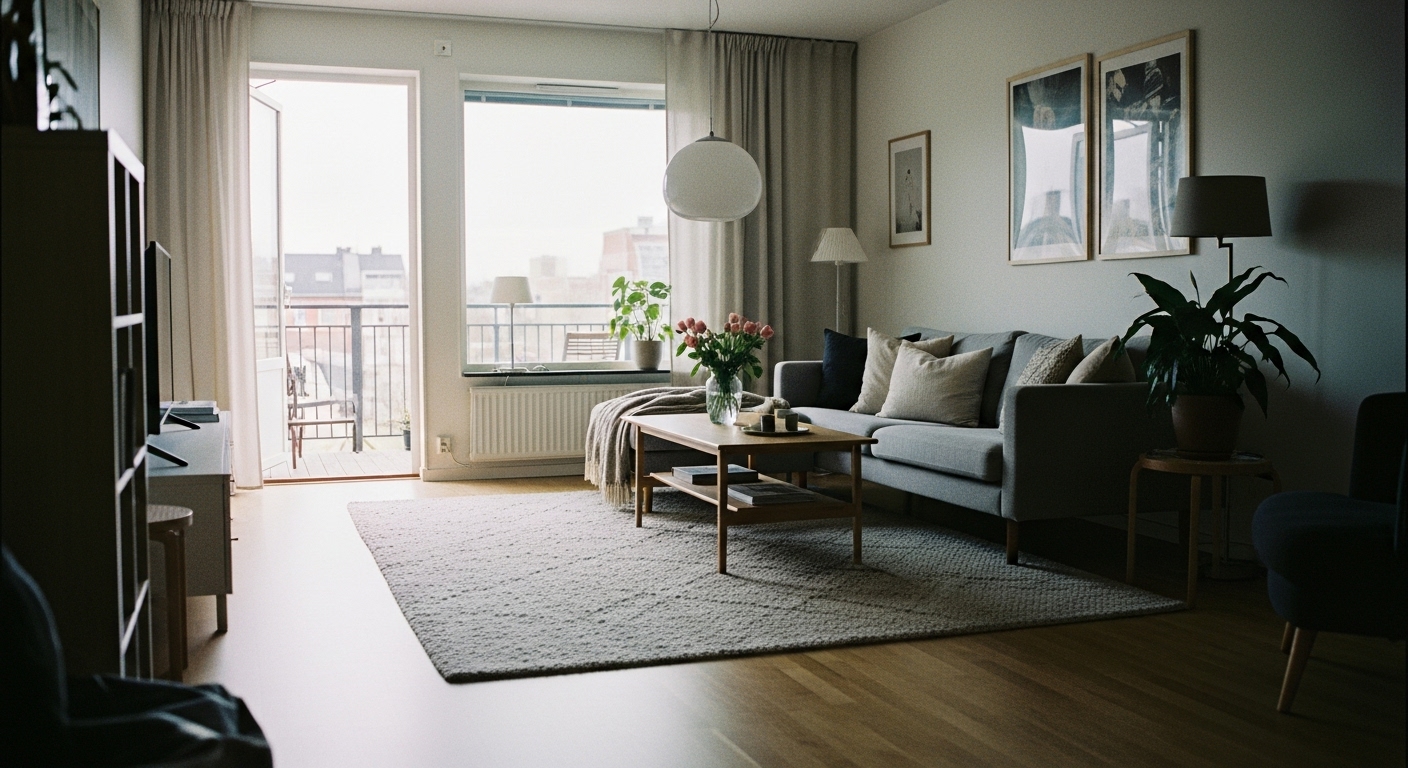 The use of a rug as a partition in an open-concept living room can increase its functionality. Place a big rug under the primary seating space to depict the living area separately in the bigger room.
The use of a rug as a partition in an open-concept living room can increase its functionality. Place a big rug under the primary seating space to depict the living area separately in the bigger room.
L-Shaped Living Rooms
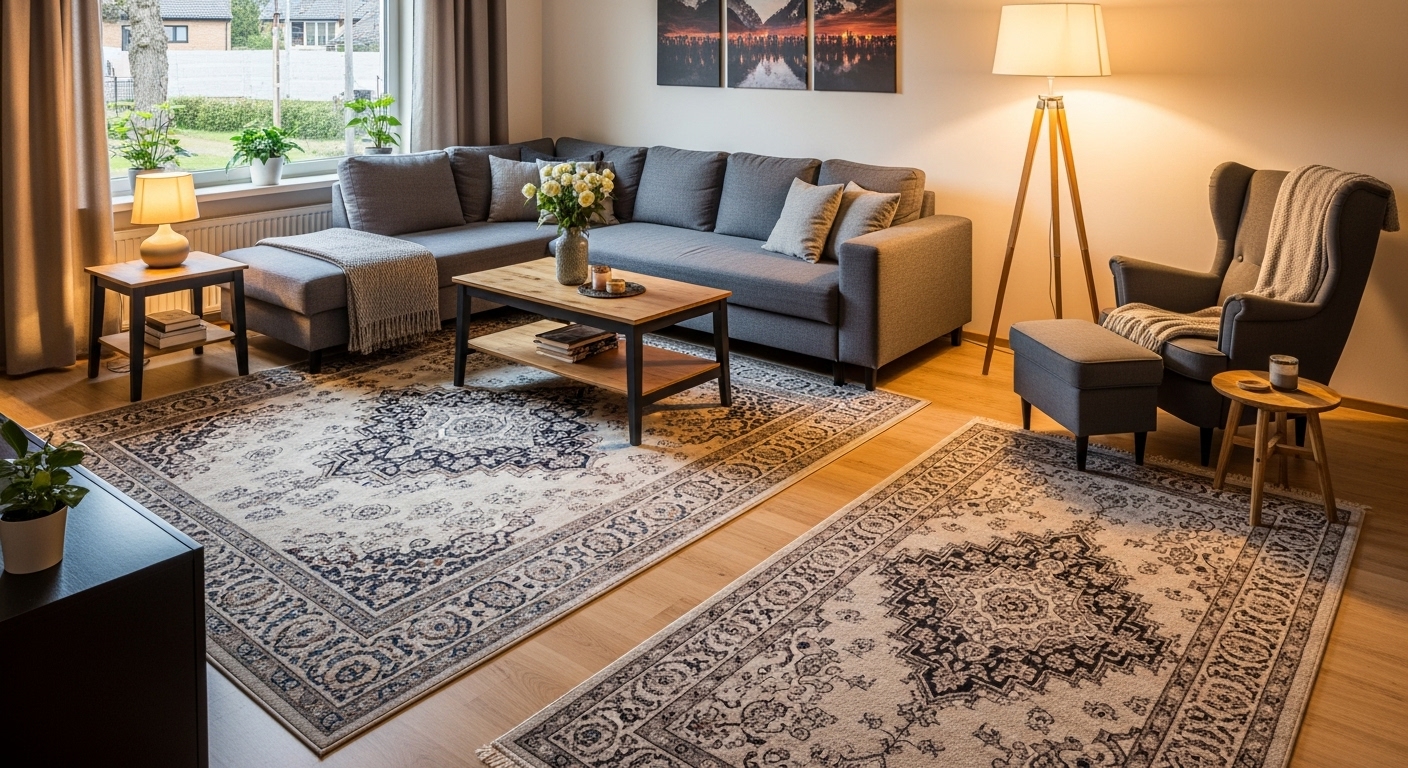 For L-shaped living rooms, it is a good idea to use two rugs to define separate areas. Alongside one rug that is located in the main seating part, have a second one positioned in a reading nook or a small conversation area.
For L-shaped living rooms, it is a good idea to use two rugs to define separate areas. Alongside one rug that is located in the main seating part, have a second one positioned in a reading nook or a small conversation area.
Small Living Rooms
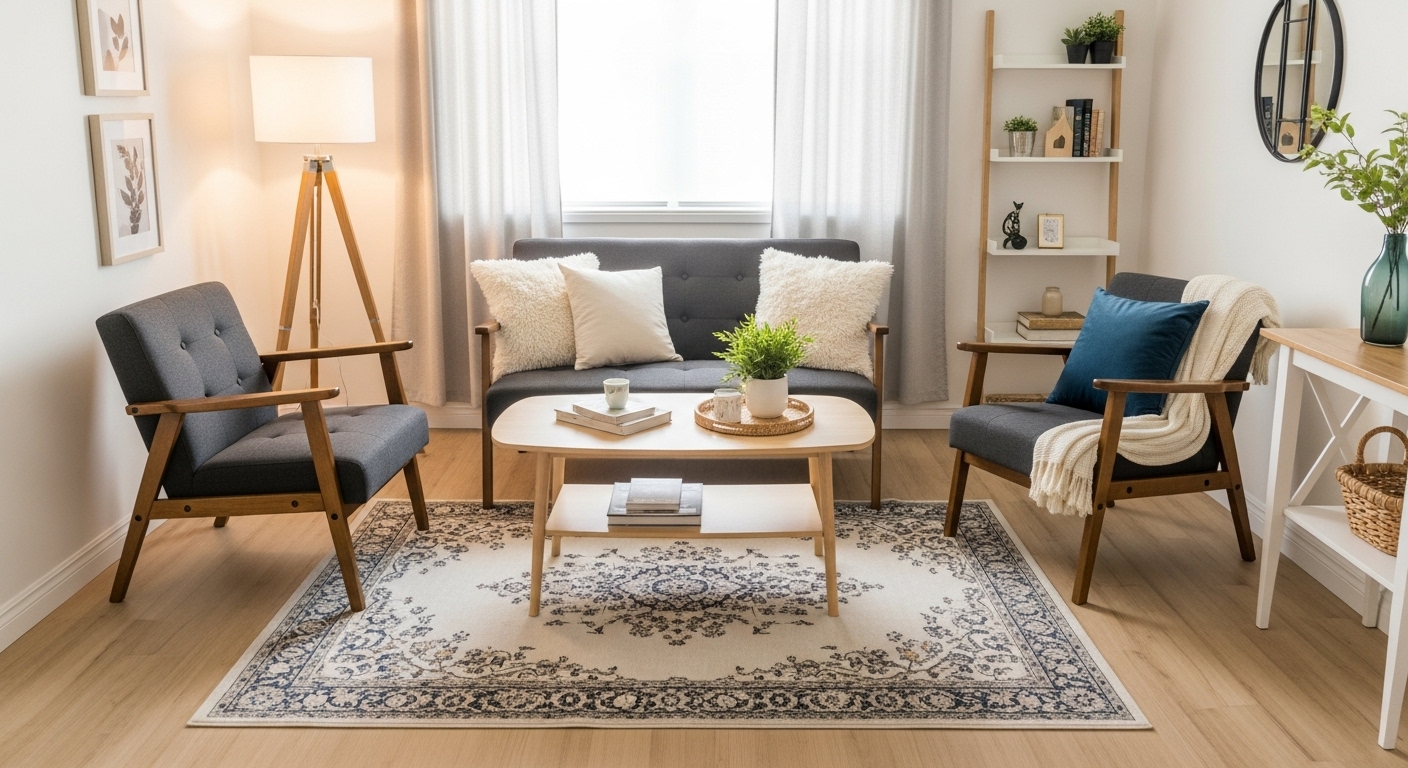 In small living rooms, a single rug under all the furnishings that fit well can visually add some space it. The rug should be the right size that fits the room’s size, excluding the space.
In small living rooms, a single rug under all the furnishings that fit well can visually add some space it. The rug should be the right size that fits the room’s size, excluding the space.
Common Mistakes in Living Room Rug Placement
Here are some of the common mistakes that people make when placing rugs in living rooms:
1. Choosing a Rug That’s Too Small
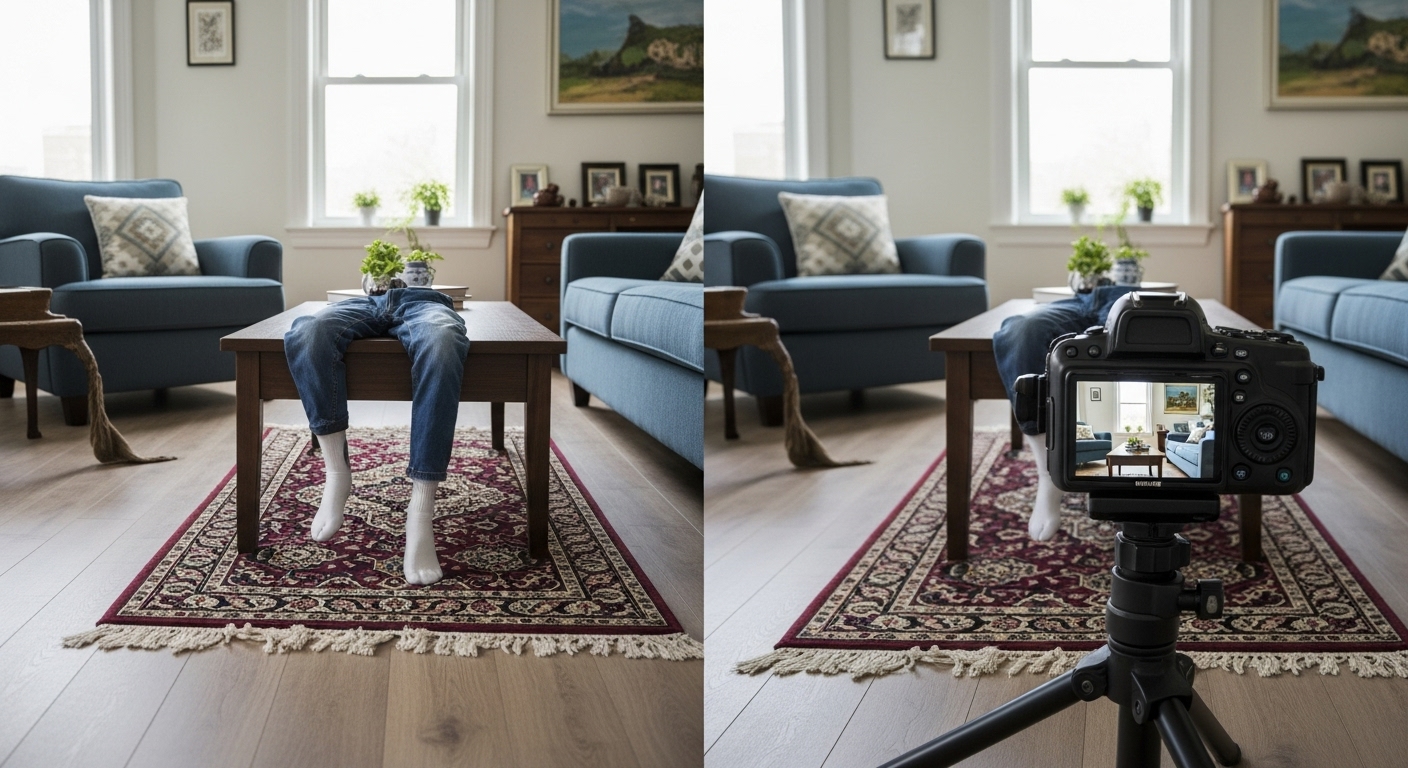 A small rug can make the space feel choppy. Always make sure that the rug is large enough to at least encompass the front legs of the furniture pieces.
A small rug can make the space feel choppy. Always make sure that the rug is large enough to at least encompass the front legs of the furniture pieces.
2. Improper Alignment
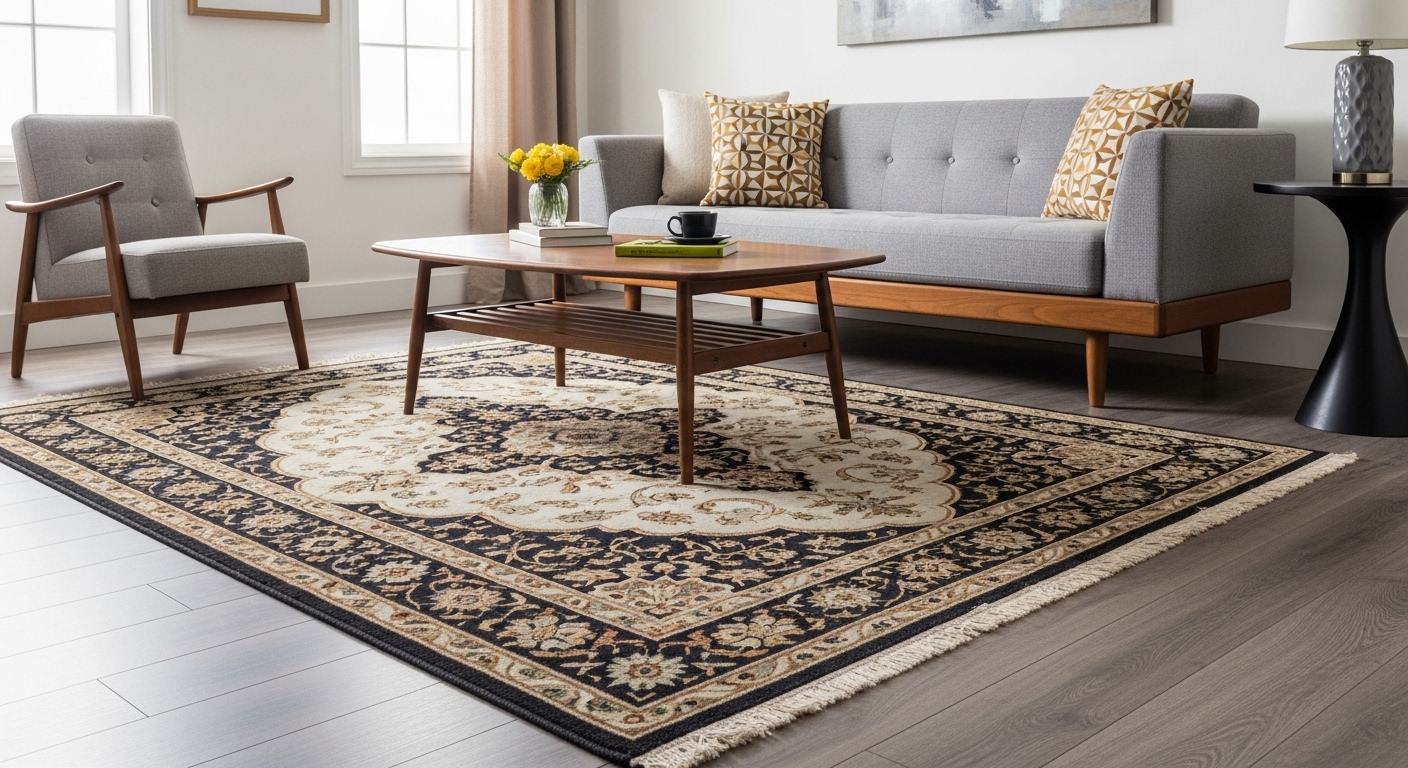 Rugs should be aligned properly with the furniture and walls. Gaps or rugs that are not in the center can disturb the balance of the whole room.
Rugs should be aligned properly with the furniture and walls. Gaps or rugs that are not in the center can disturb the balance of the whole room.
3. Ignoring Traffic Patterns
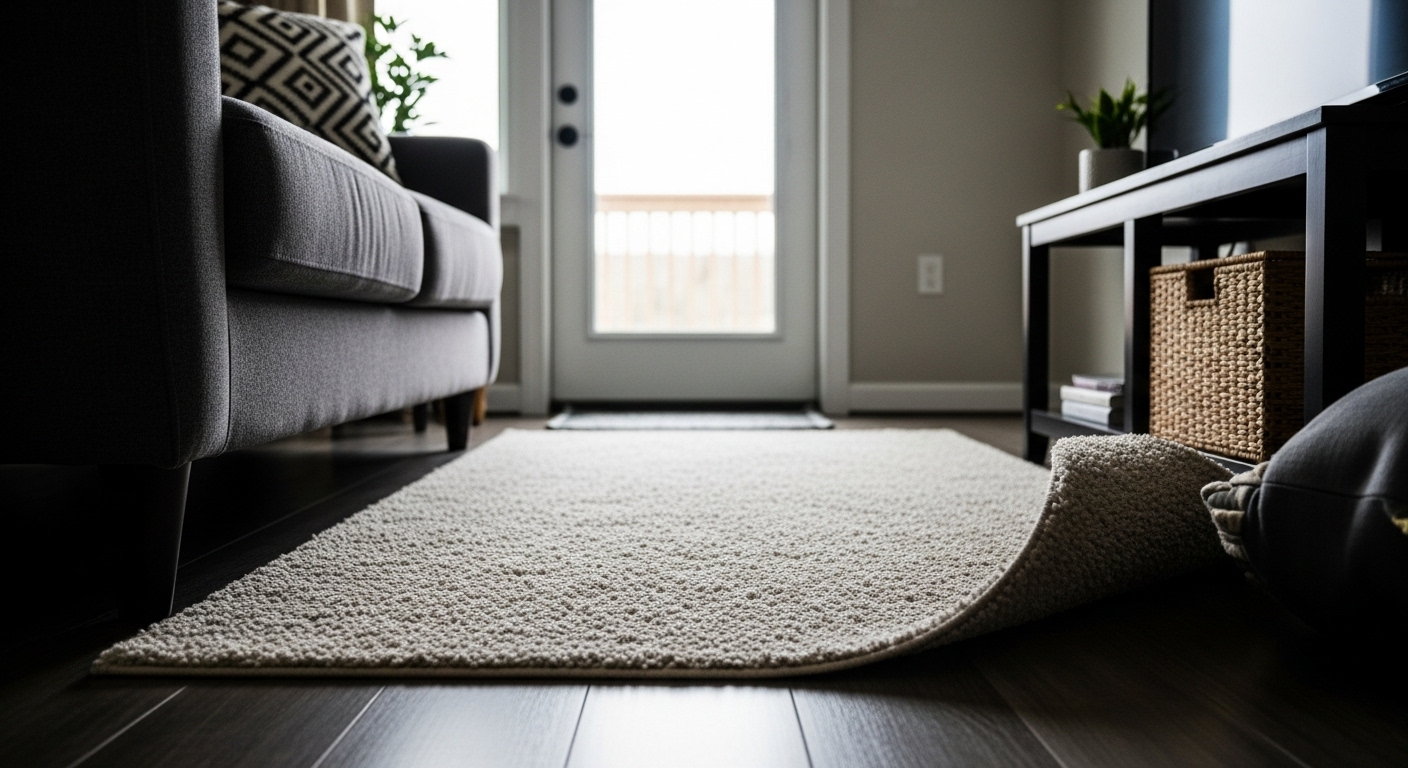 People also tend to trip over rugs in high-traffic areas that are not properly secured. The way people move around the room should be taken into consideration when deciding on the arrangement of rugs.
People also tend to trip over rugs in high-traffic areas that are not properly secured. The way people move around the room should be taken into consideration when deciding on the arrangement of rugs.
Rug Placement for Different Furniture Arrangements
Various furniture arrangements need different approaches to rug placement:
1. Floating Furniture Arrangement
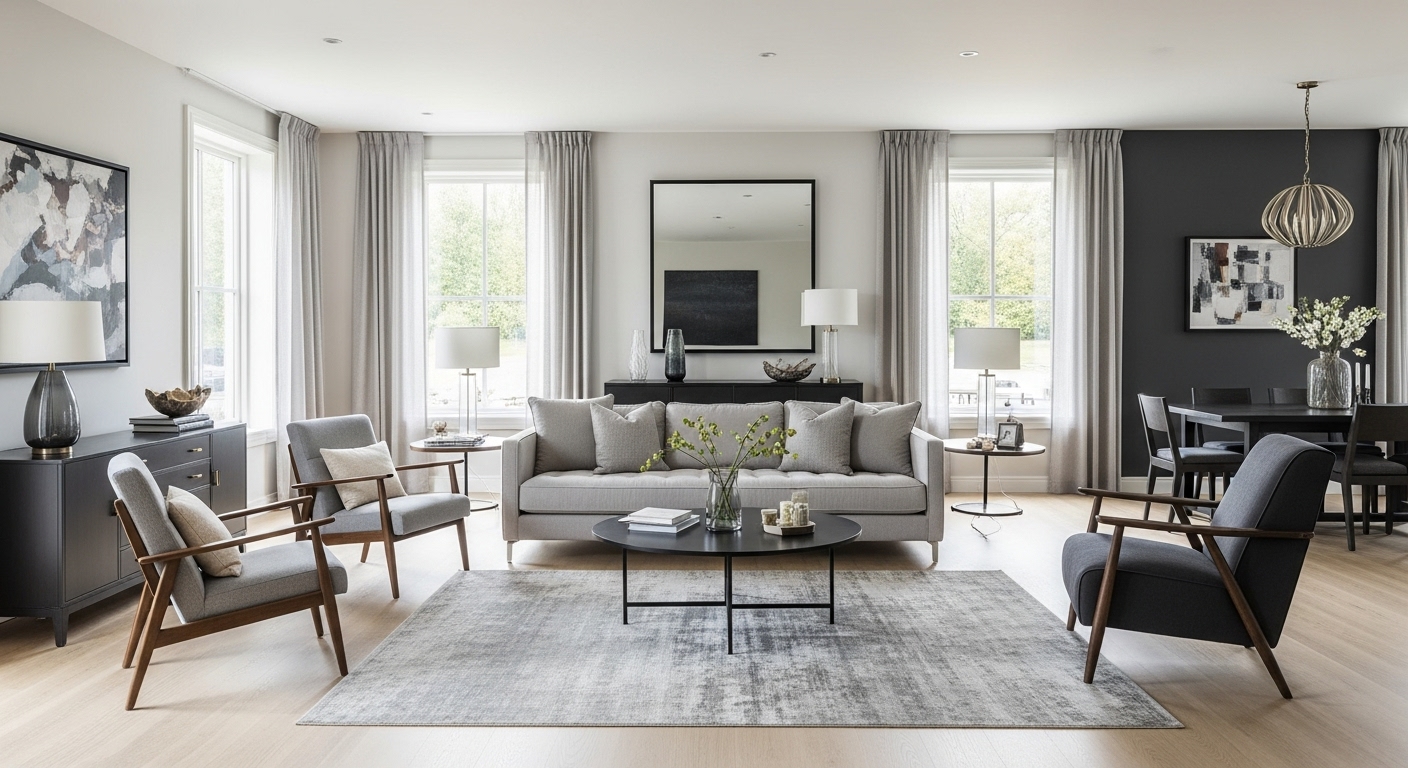 In a floating furniture arrangement where furniture is kept far from the walls, a large rug that covers all the pieces is the perfect choice. This makes sure that the space looks cohesive and defines the seating area.
In a floating furniture arrangement where furniture is kept far from the walls, a large rug that covers all the pieces is the perfect choice. This makes sure that the space looks cohesive and defines the seating area.
2. Wall-Hugging Arrangement
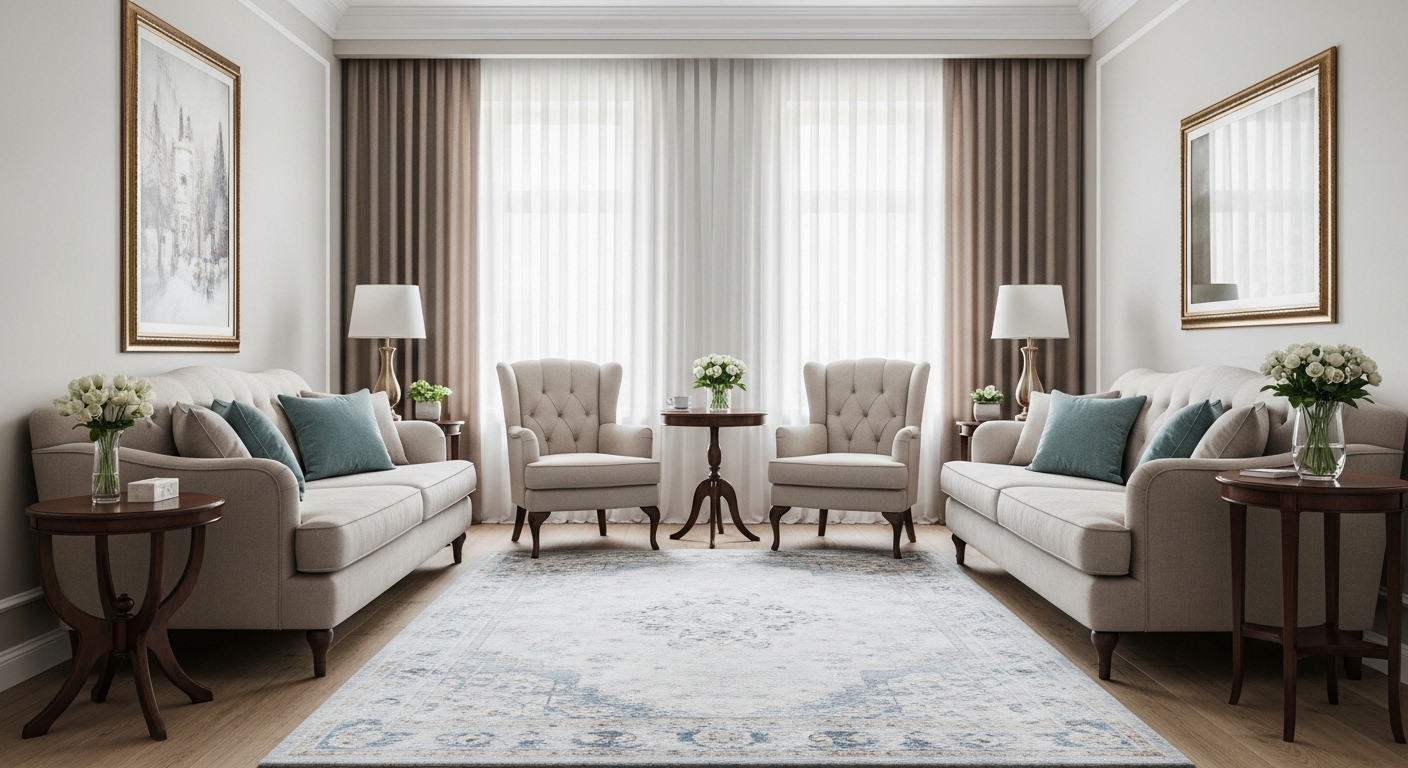 Even if the furniture is close to the walls, the rug should still be big enough to allow all pieces to put their front legs on it. This will bring the entire room together, visually.
Even if the furniture is close to the walls, the rug should still be big enough to allow all pieces to put their front legs on it. This will bring the entire room together, visually.
3. Conversation Area
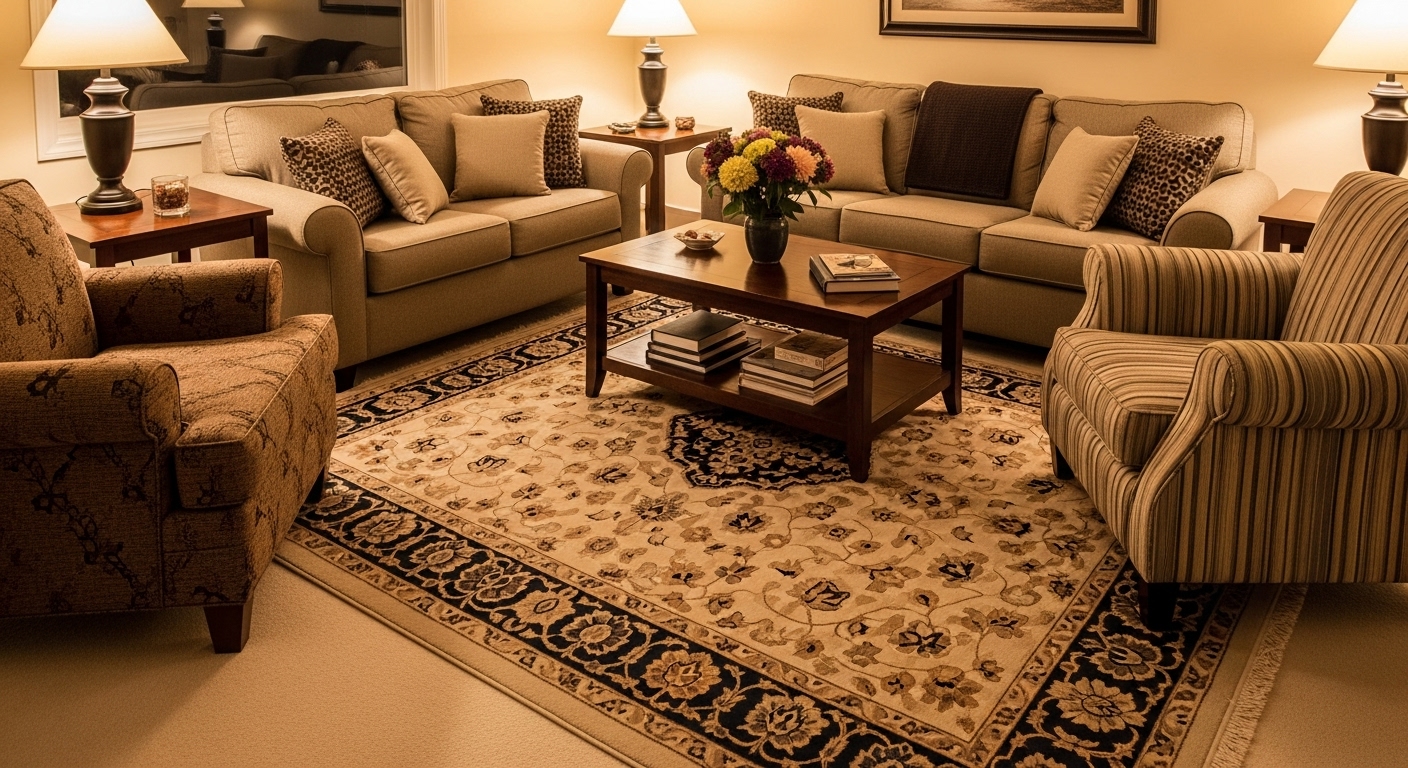 To create a conversation area, place the rug so that it extends beyond the seating area. This creates a clear point of interaction and comfort.
To create a conversation area, place the rug so that it extends beyond the seating area. This creates a clear point of interaction and comfort.
Rug Placement with Sectional Sofas
Rug placements with sectional sofas come with their unique challenges. The following are some of the tips:
1. Extend Beyond the Sectional
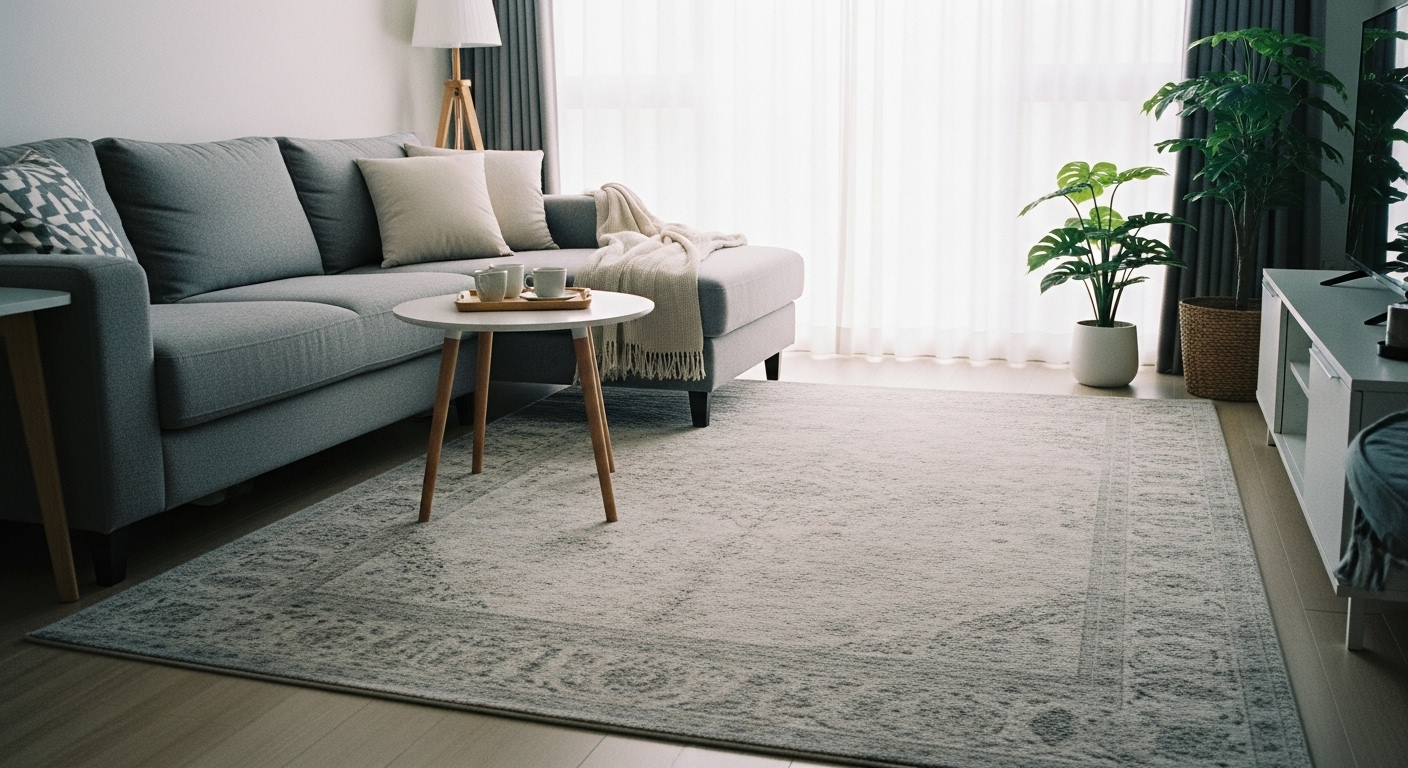 Make sure the rug goes past the edges of the couch, as this contributes to a sense of balance and prevents the rug from appearing too small for the room.
Make sure the rug goes past the edges of the couch, as this contributes to a sense of balance and prevents the rug from appearing too small for the room.
2. Consider the Shape
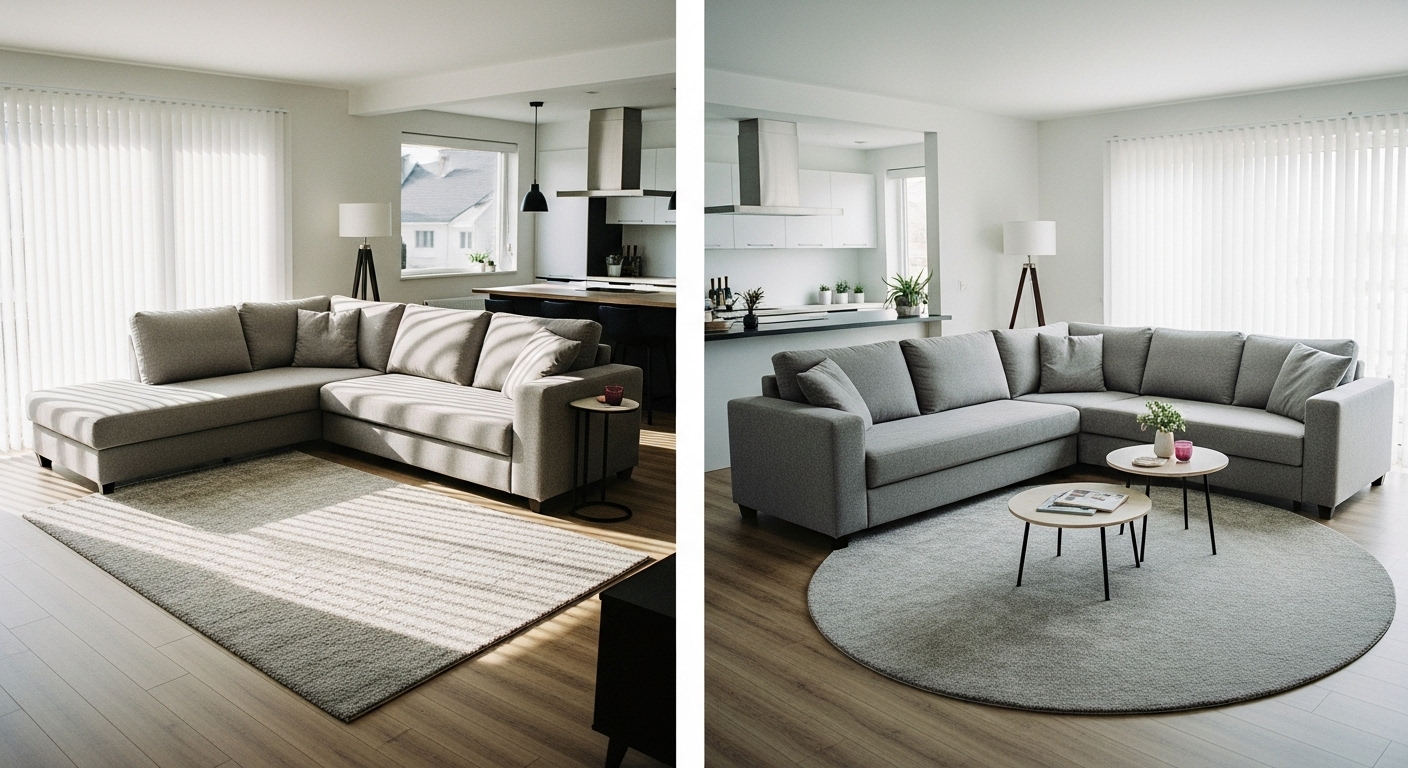 To make the living space look wider, L-shaped sectionals can be partnered with rectangular rugs. U-shaped sectionals can also be balanced using a large square or round carpet that reflects the same curved seating portion.
To make the living space look wider, L-shaped sectionals can be partnered with rectangular rugs. U-shaped sectionals can also be balanced using a large square or round carpet that reflects the same curved seating portion.
3. Placement Options
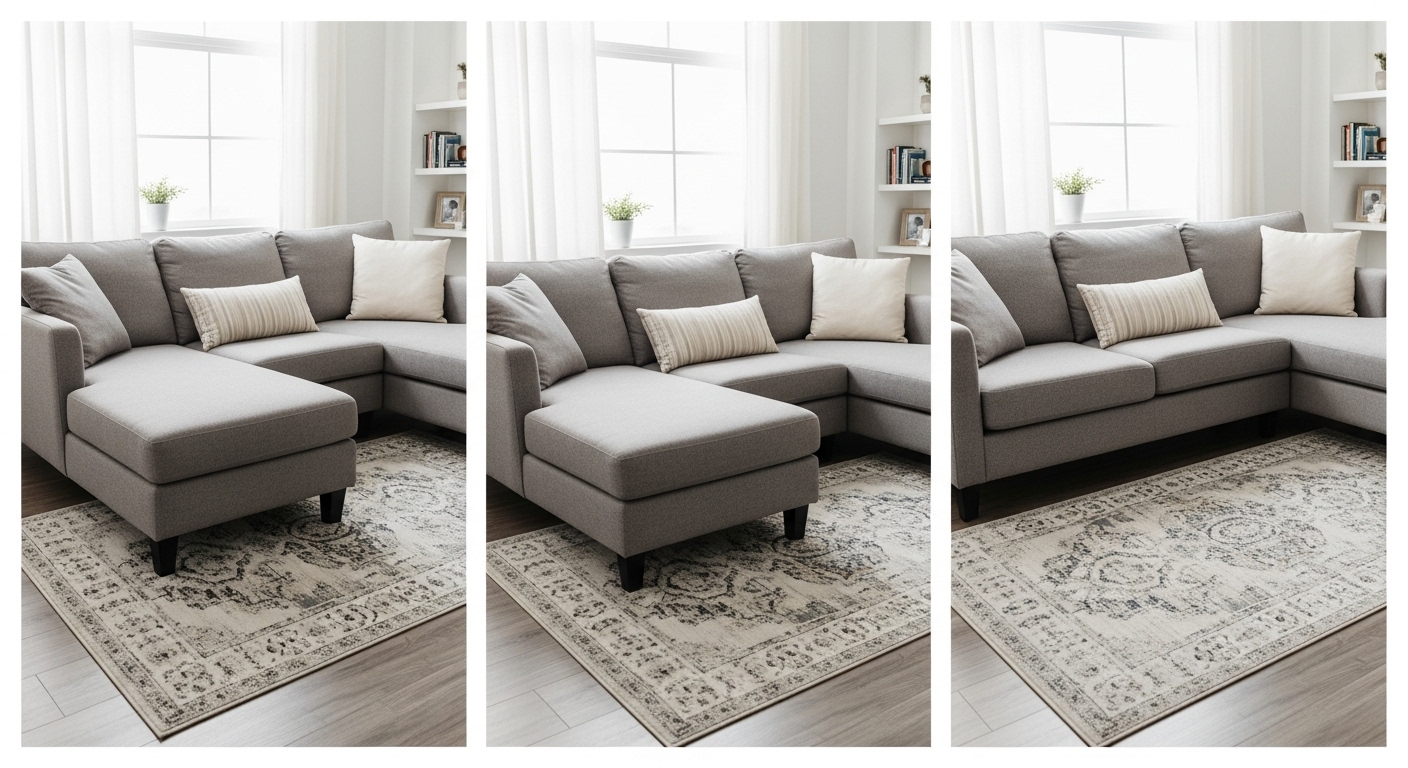 There are three primary ways to put a rug underneath a sectional: having all legs of the sectional on the rug, only front legs on the rug, or having the rug in front of the sectional. Choose one that matches the dimensions of your room and carpet.
There are three primary ways to put a rug underneath a sectional: having all legs of the sectional on the rug, only front legs on the rug, or having the rug in front of the sectional. Choose one that matches the dimensions of your room and carpet.
Seasonal Considerations for Rug Placement
The position of a rug can be changed depending on the season for both practical and aesthetic reasons:
1. Winter
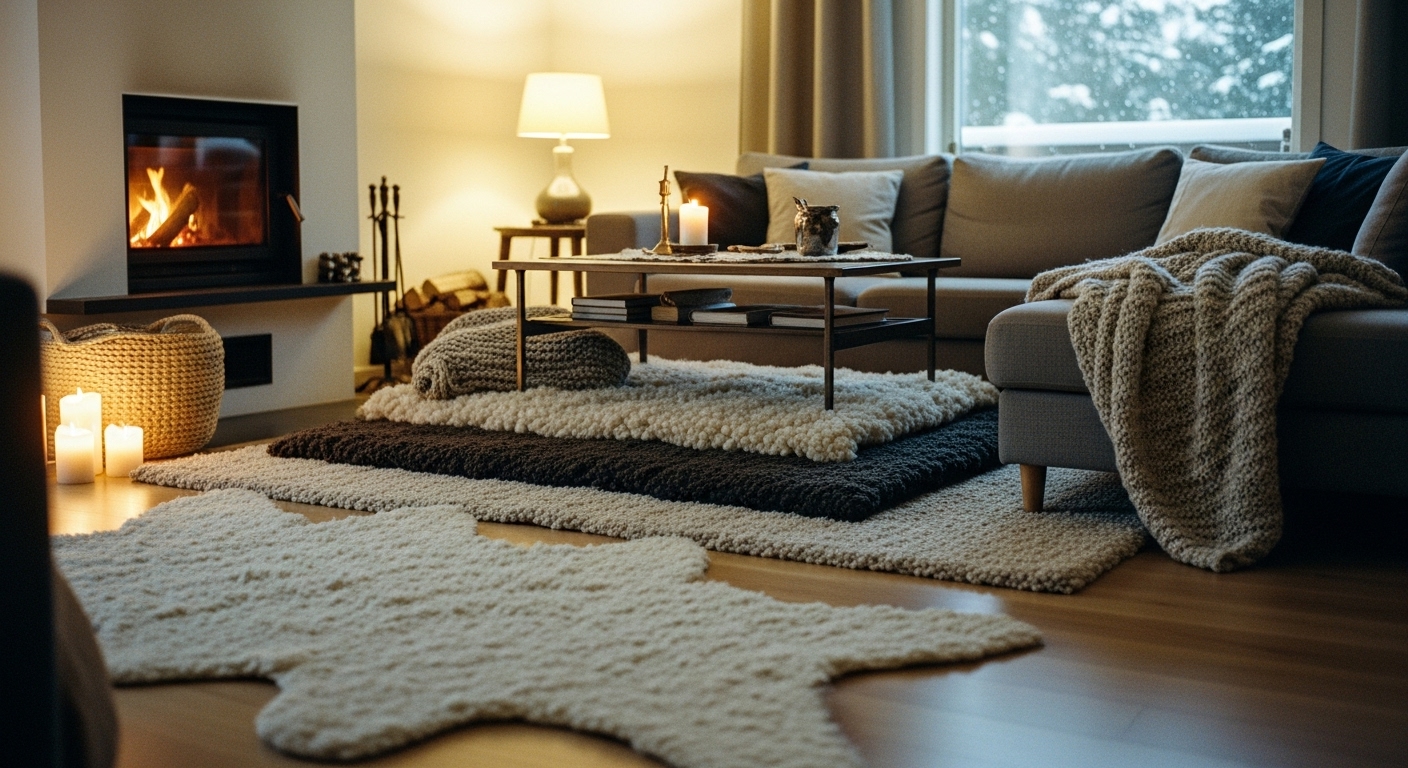 In the colder months, the way to keep warm and cozy, along with adding some insulation, is to add more rugs or layer the existing ones. Also, this can serve you in terms of insulation.
In the colder months, the way to keep warm and cozy, along with adding some insulation, is to add more rugs or layer the existing ones. Also, this can serve you in terms of insulation.
2. Summer
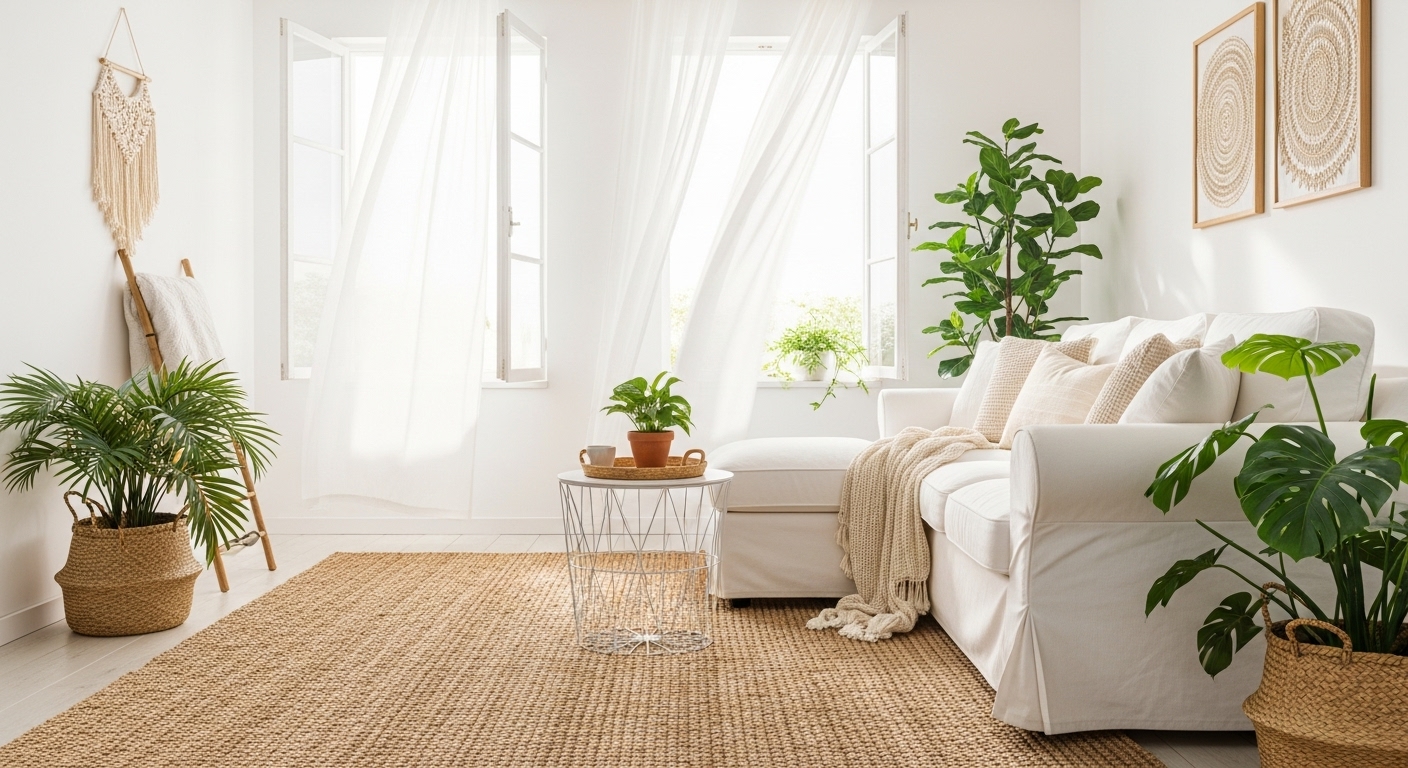
In summer months, the most comfortable things to use would be lighter, natural fiber rugs such as jute or sisal.
3. Spring and Fall
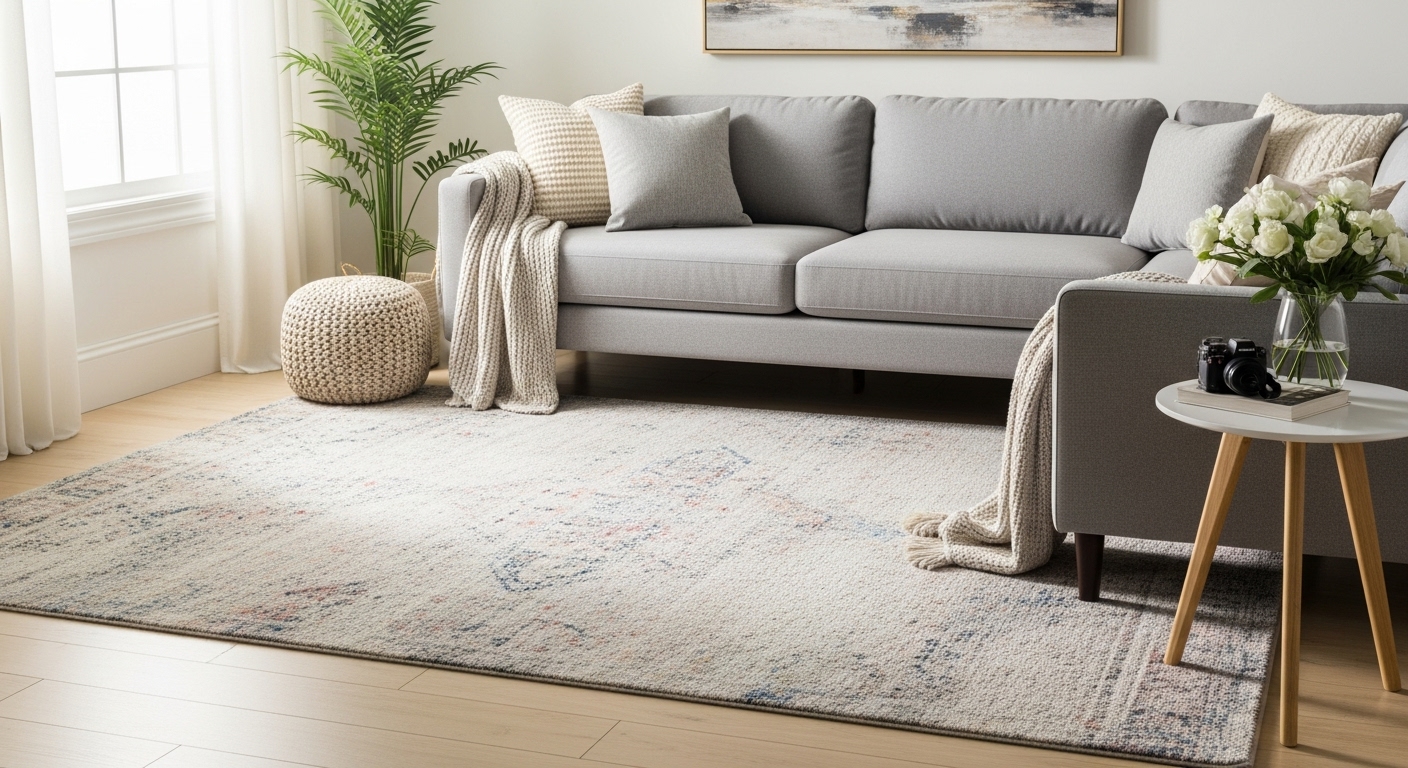
In the middle of the morning and night, I have thought of using the medium height carpet with faint shades since it will emphatically maintain the even area and smooth line.
Rug Placement for Different Living Room Shapes
The shape of the living room can affect rug placement decisions in the following ways:
1. Square Living Rooms
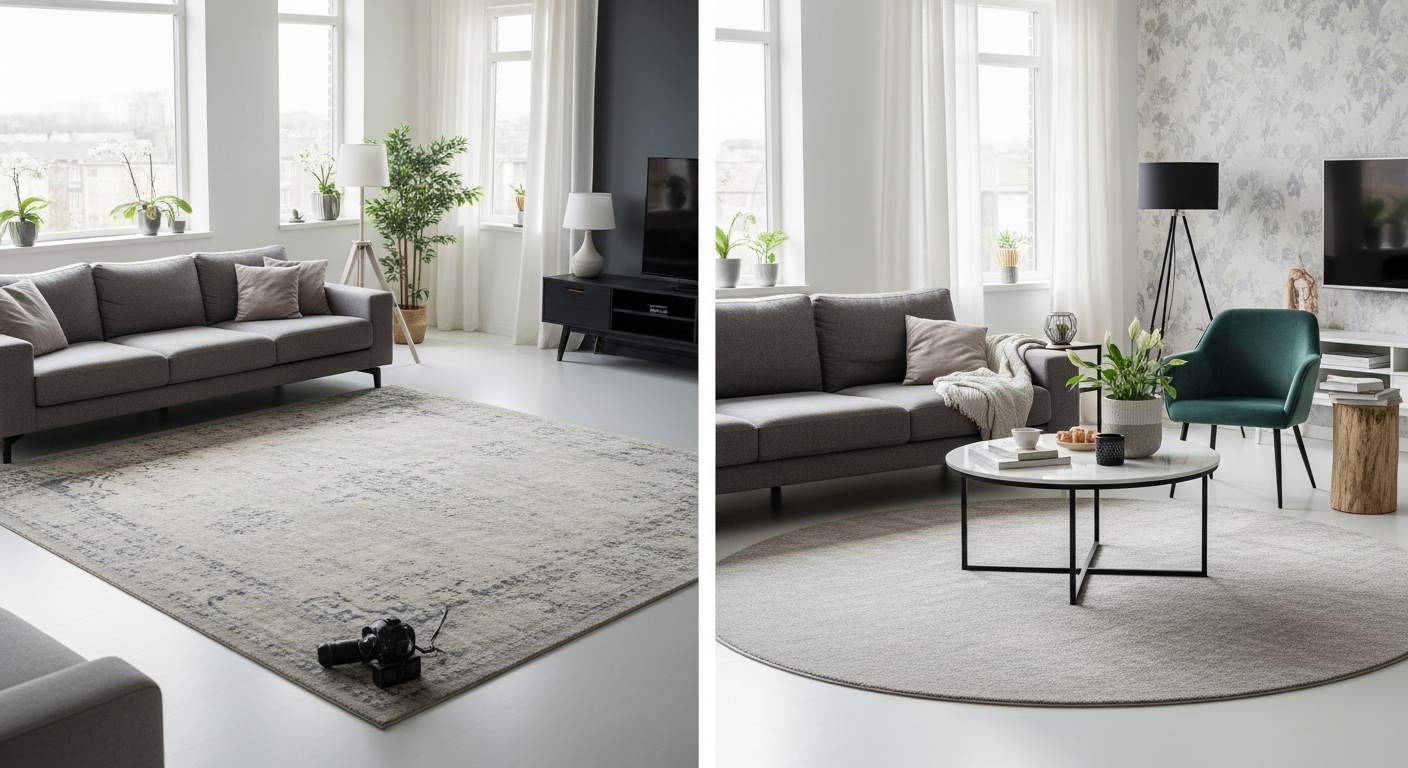 A big square rug in square rooms will work as a way to separate the space. On the other hand, a circular rug can help to reduce the room’s sharpness and create a focus for the eye.
A big square rug in square rooms will work as a way to separate the space. On the other hand, a circular rug can help to reduce the room’s sharpness and create a focus for the eye.
2. Rectangular Living Rooms
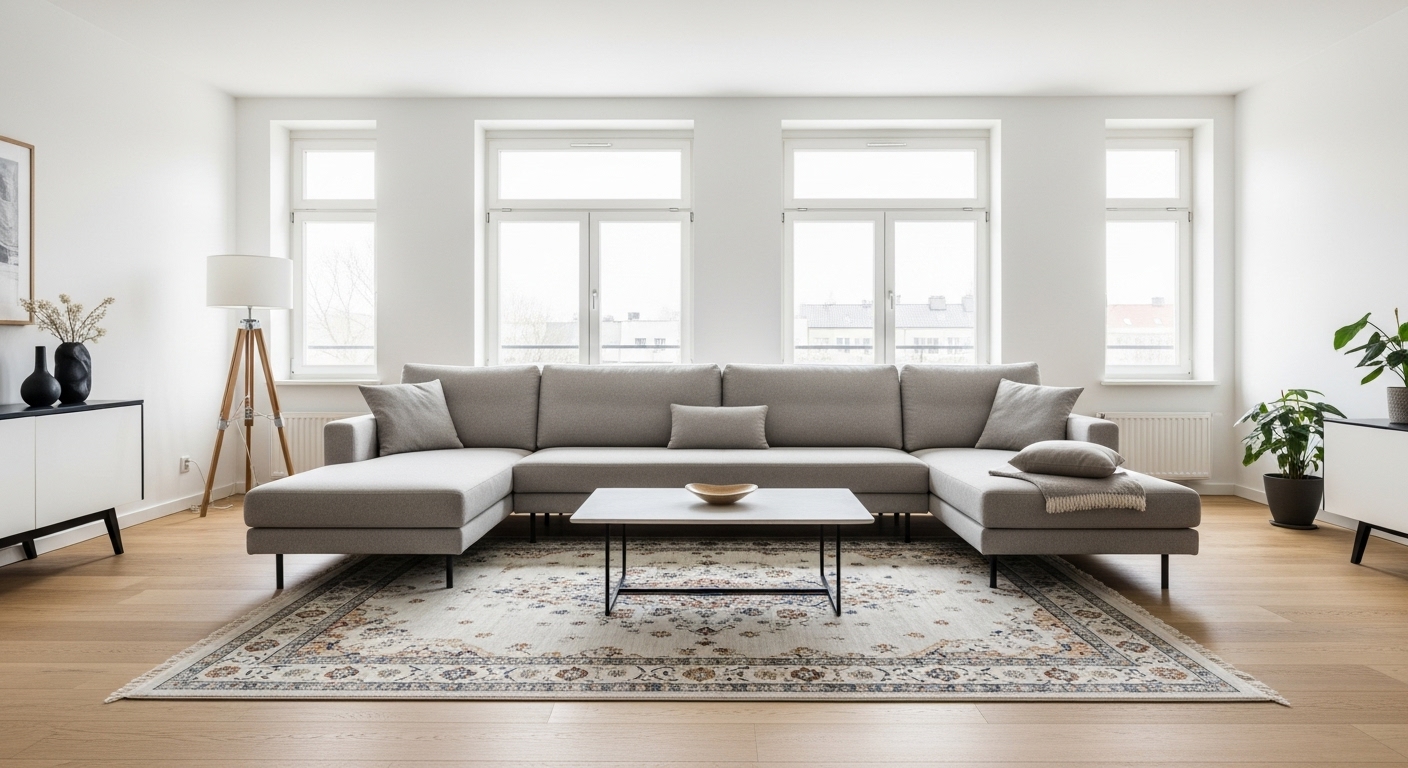 For those in narrow rooms, a rug that feels the same as the room looks good. Watch the rug is right in the middle, and each side of the rug is the same size as the others.
For those in narrow rooms, a rug that feels the same as the room looks good. Watch the rug is right in the middle, and each side of the rug is the same size as the others.
3. Irregularly Shaped Living Rooms
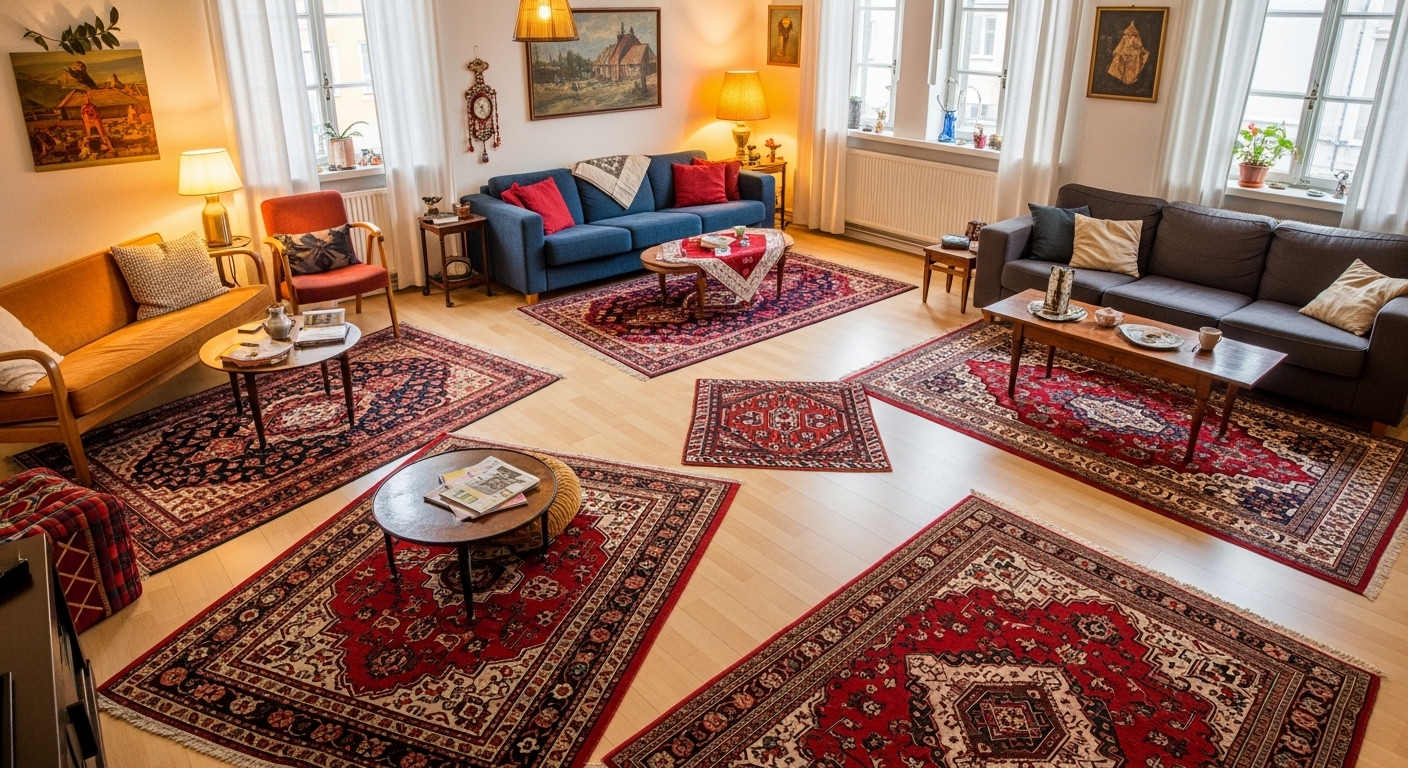 In scenes of crazy shapes, the rugs can be used to create distinct spots in the room. Scarfing down smaller rugs can help to organize the different uses for the zones.
In scenes of crazy shapes, the rugs can be used to create distinct spots in the room. Scarfing down smaller rugs can help to organize the different uses for the zones.
Rug Placement Tips for Maximizing Space
Where your rug is plays a big role in the way you feel about your room. Let’s see how a rug can turn the room into a cozier space one time and into a wider one the other:
1. Create an Illusion of Space
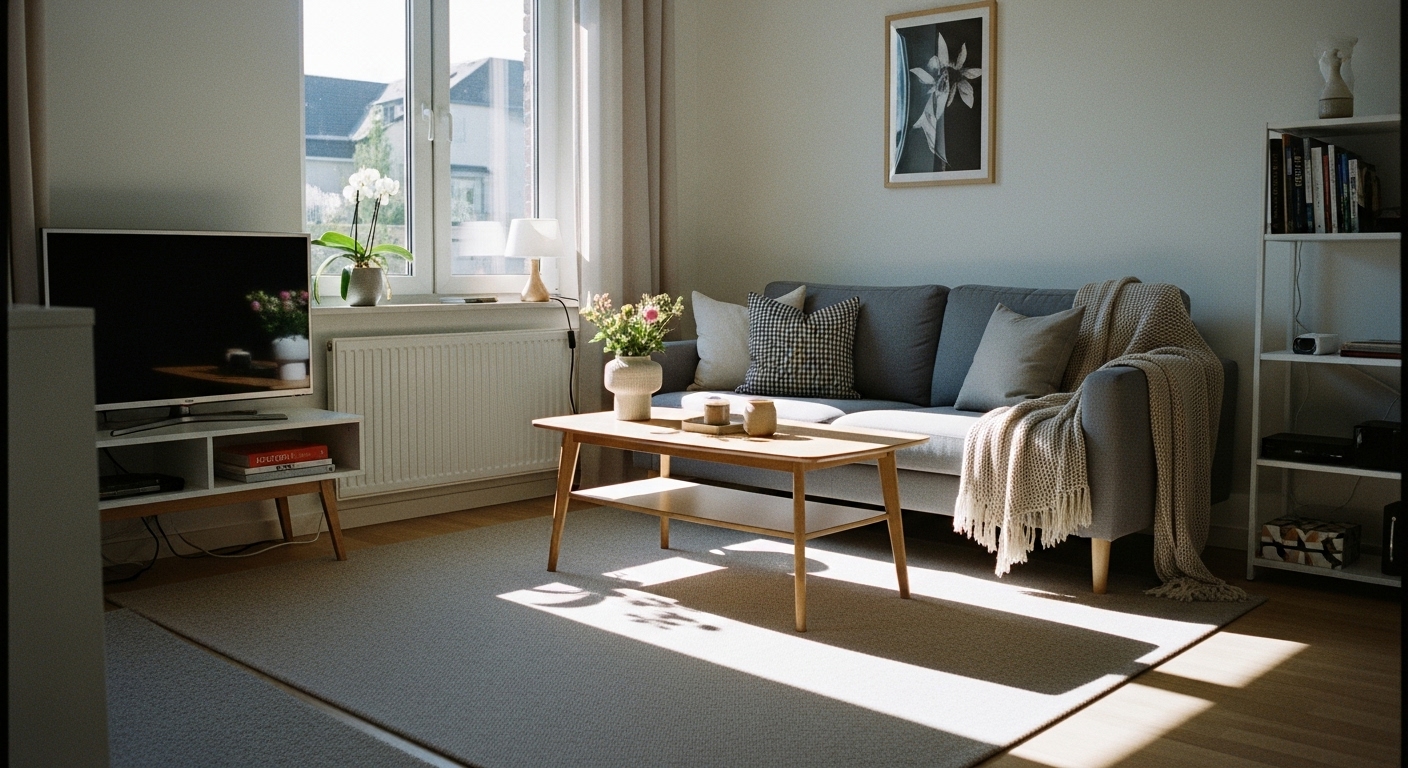
On the one hand, to make it seem like a larger room, go for a carpet with light colors or very simple styles. Go further with the carpet under the furniture arrangement. For more tips on how to create an illusion of space in smaller areas, check out our guide.
2. Define Zones
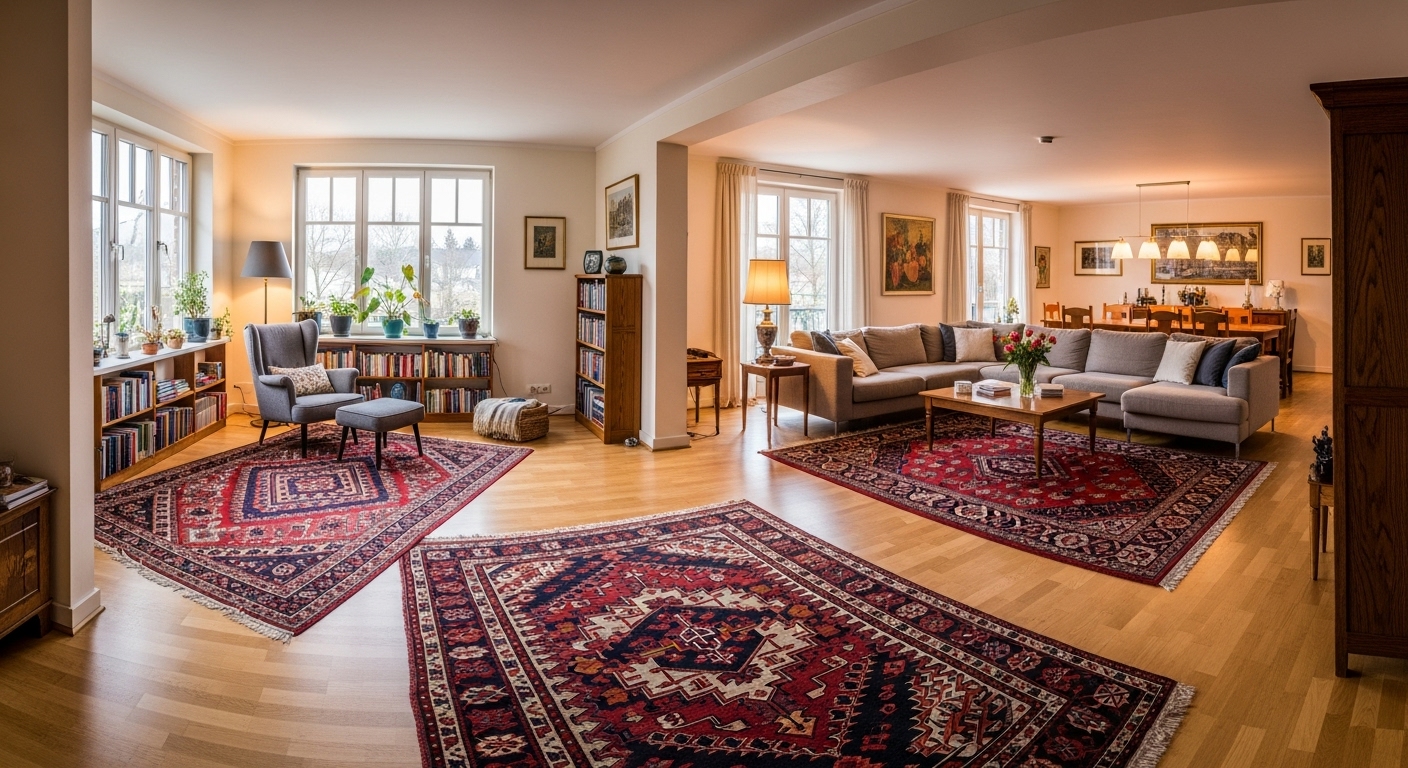 In larger spaces, create different zones for other activities, such as the conversation area and the reading nook, with the rugs.
In larger spaces, create different zones for other activities, such as the conversation area and the reading nook, with the rugs.
3. Layer Rugs
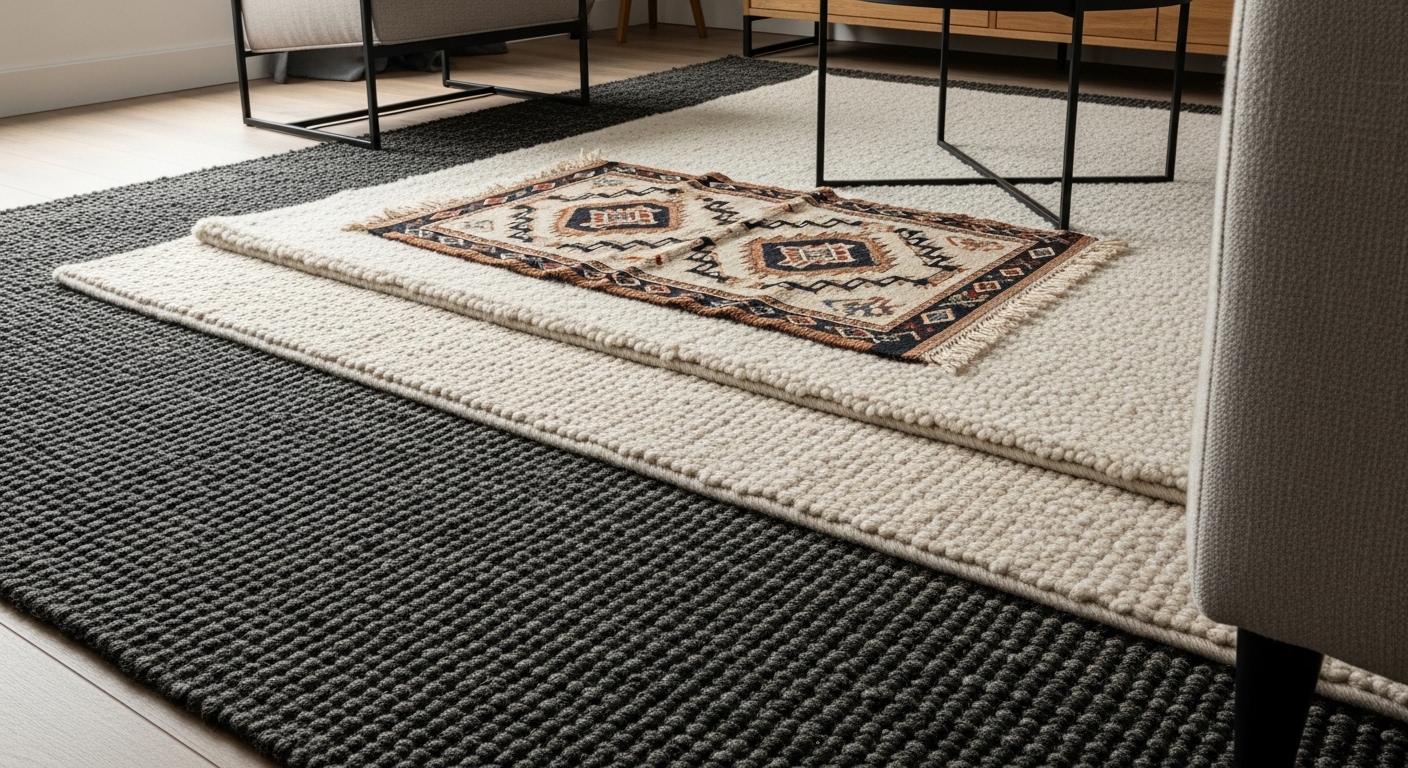
You can enhance a room by layering rugs on the floor and creating depth and texture. Place a dark base beneath a small, patterned mat beneath that is a gigantic plain rug.
Conclusion
The living room carpet is a design tool of great importance as it represents a significant amount of the space’s design. Through the use of these rules for the correct size of a rug, placement with different furniture layouts, and thinking about winter and summer conditions, anyone can develop a beautiful and balanced living room. Take into account that while guidelines work well, personal taste and individual features should also be within the rug placement decisions.
FAQs
Q1: What is the ideal rug size for a living room?
A: It all depends on the size of the room and the furniture but still a half of rug should be enough to fit in all the seating furniture.
Q2: How do I place a rug with a sectional sofa?
A: The perfect placement of the rug would be the one that overextends the sectional on all four sides to create a pull-out area. Around the legs of the sofa, some carpets along the sectional need to be taken out.
Q3: Should a rug go under a coffee table?
A: Typically, yes, the coffee table should sit on the rug to create a cohesive look.
Q4: How far should a rug be from the wall?
A: The most appropriate amount is 12-18 inches of floor left empty on the wall side.
Q5: Can I use multiple rugs in one living room?
A: Absolutely! A room can be divided into sections using different rugs in a big room or an open space.
Transform your living room style by positioning your rugs perfectly! Find expert tips on design with regard to rug placement, sizing, and layout to create a warm and balanced living room space. Don’t let your rug feel lost or mismatched. Learn how to shape and tie your furniture together with rug placement! Click now and learn the process of the five different ways you can style your rugs in a living room!



